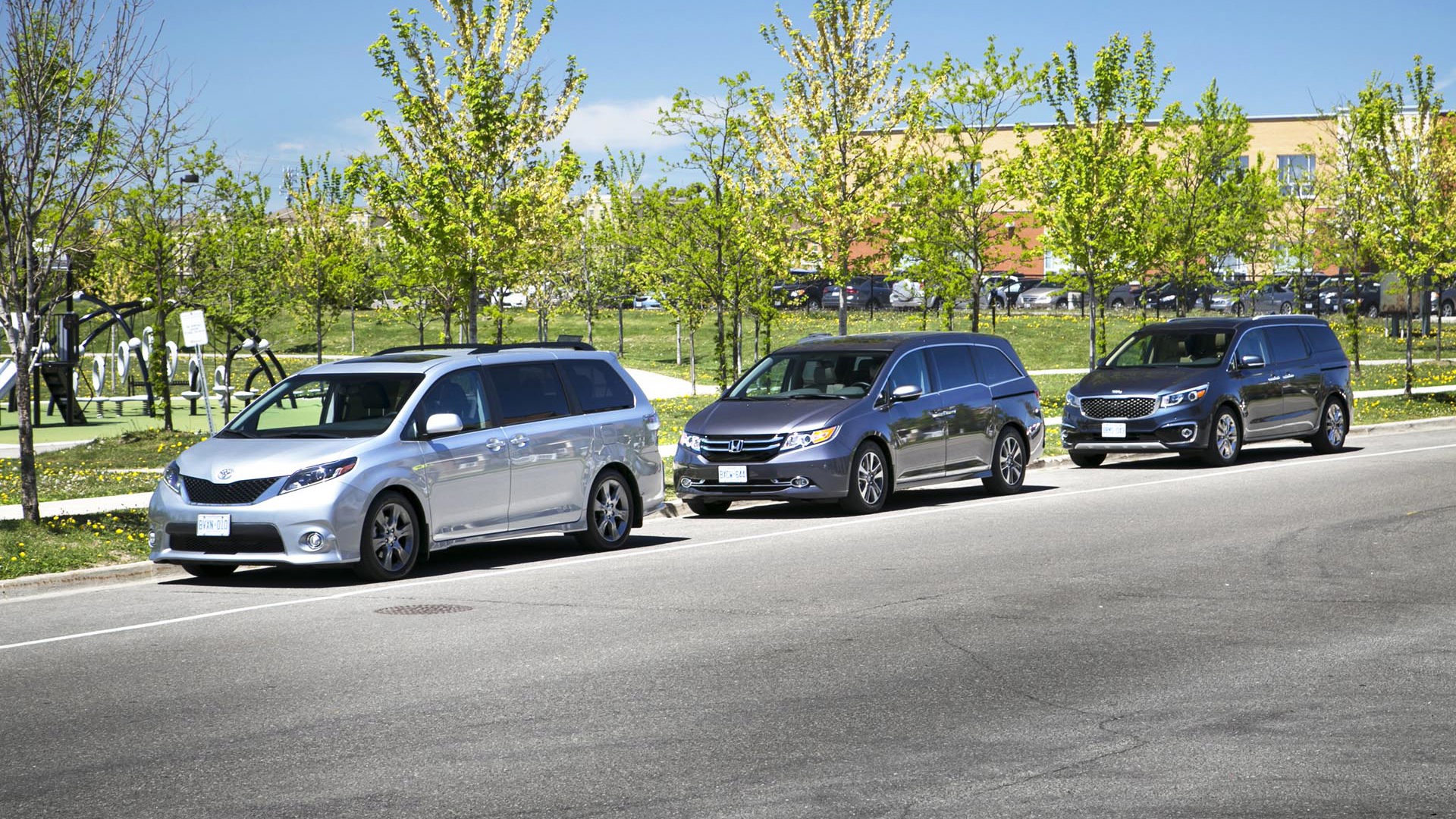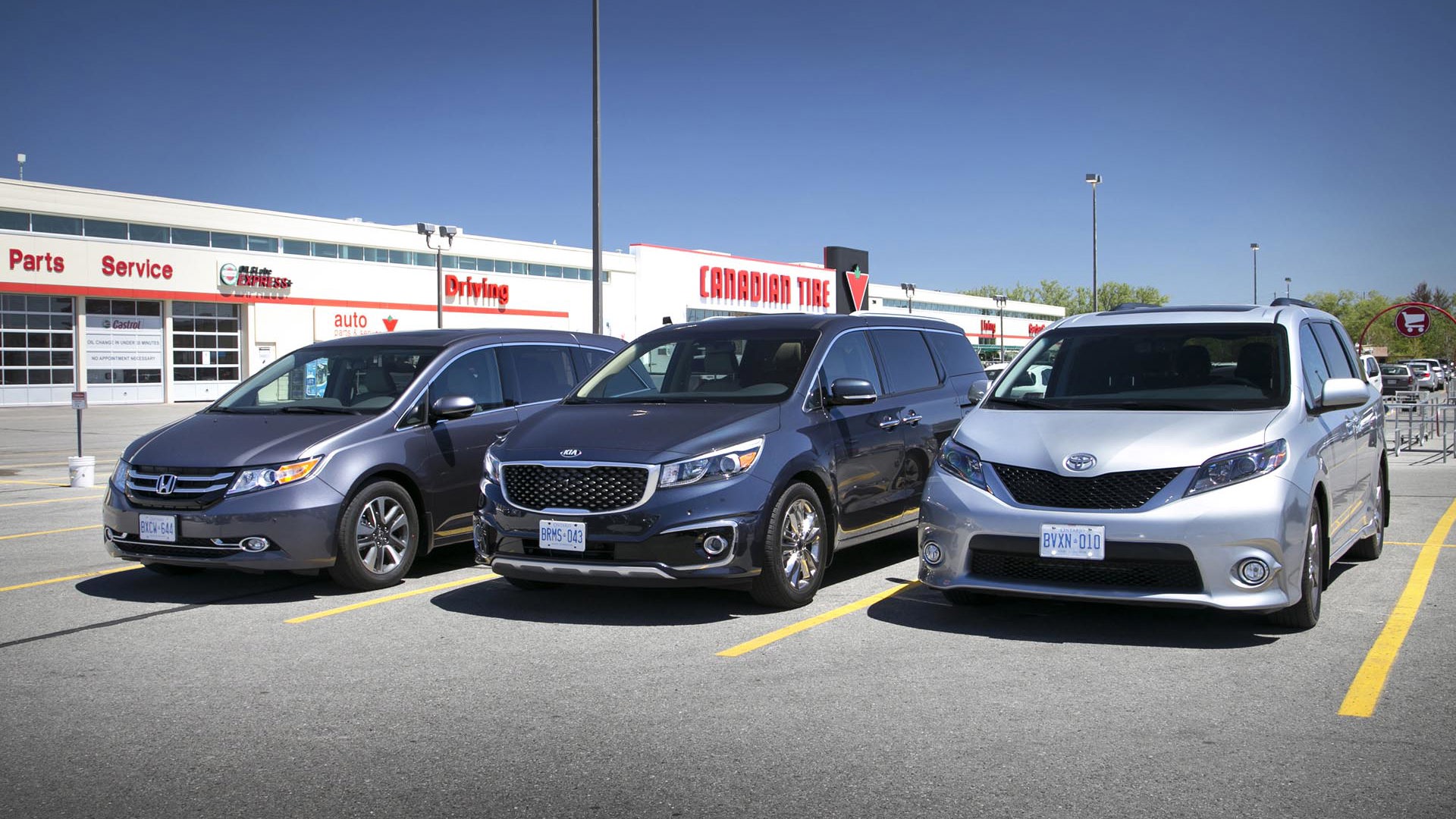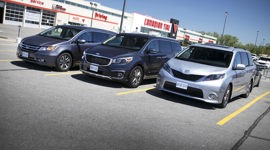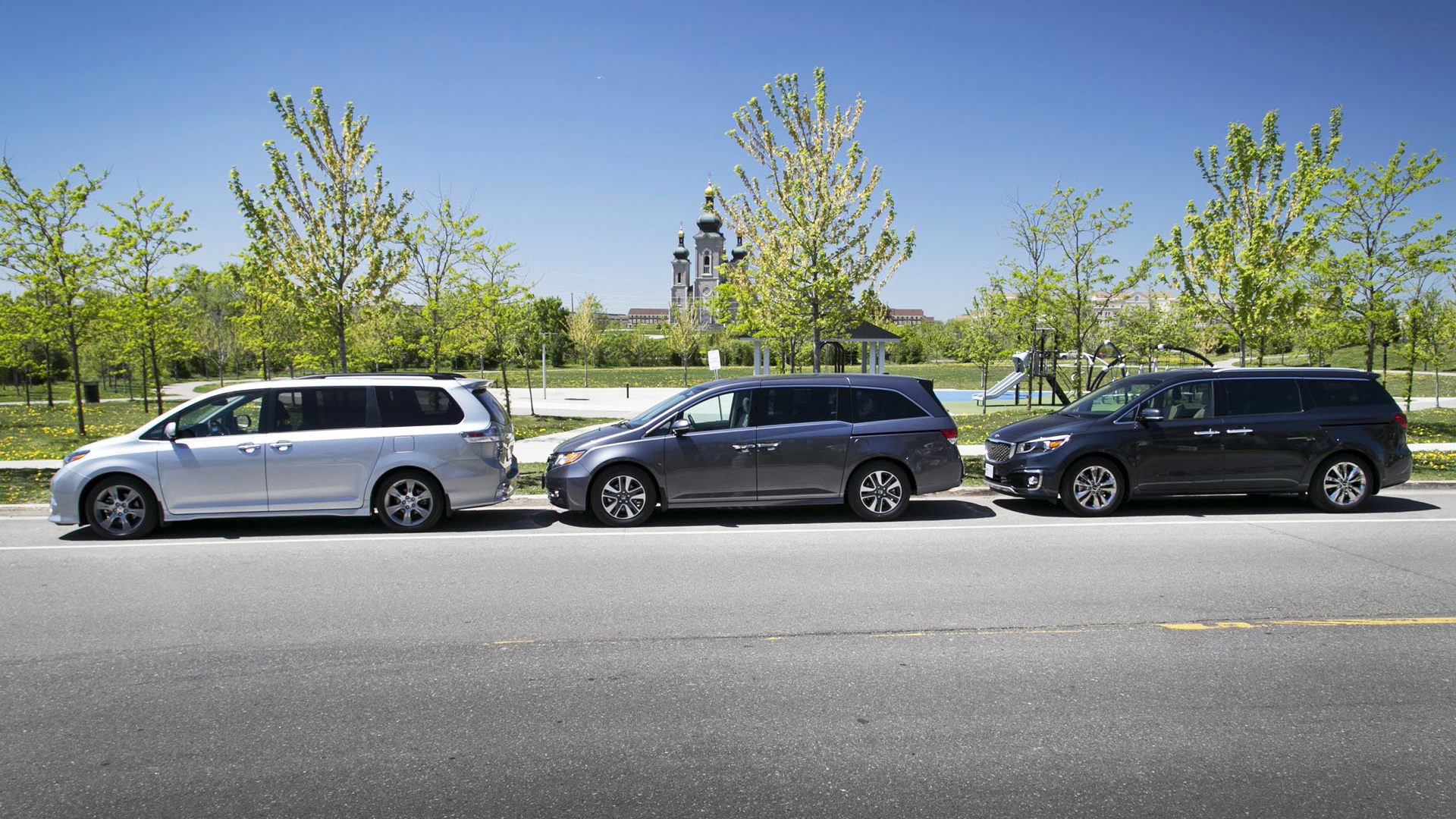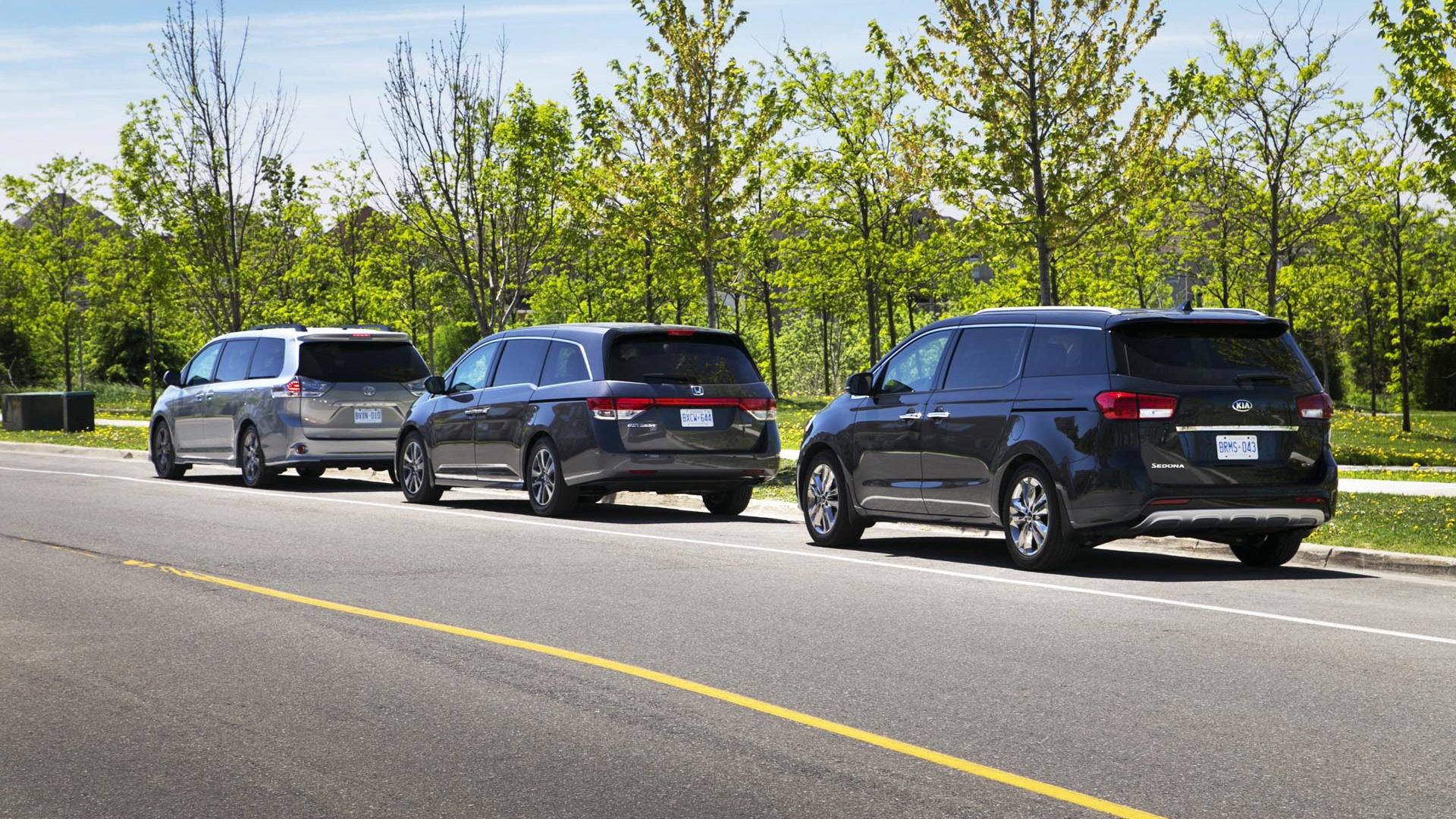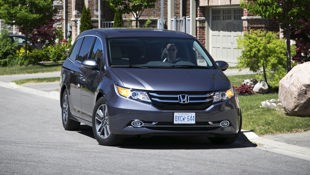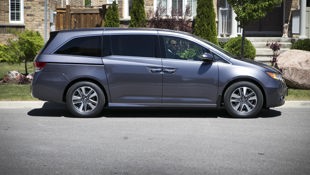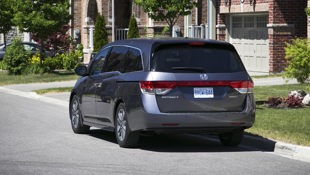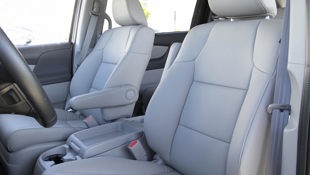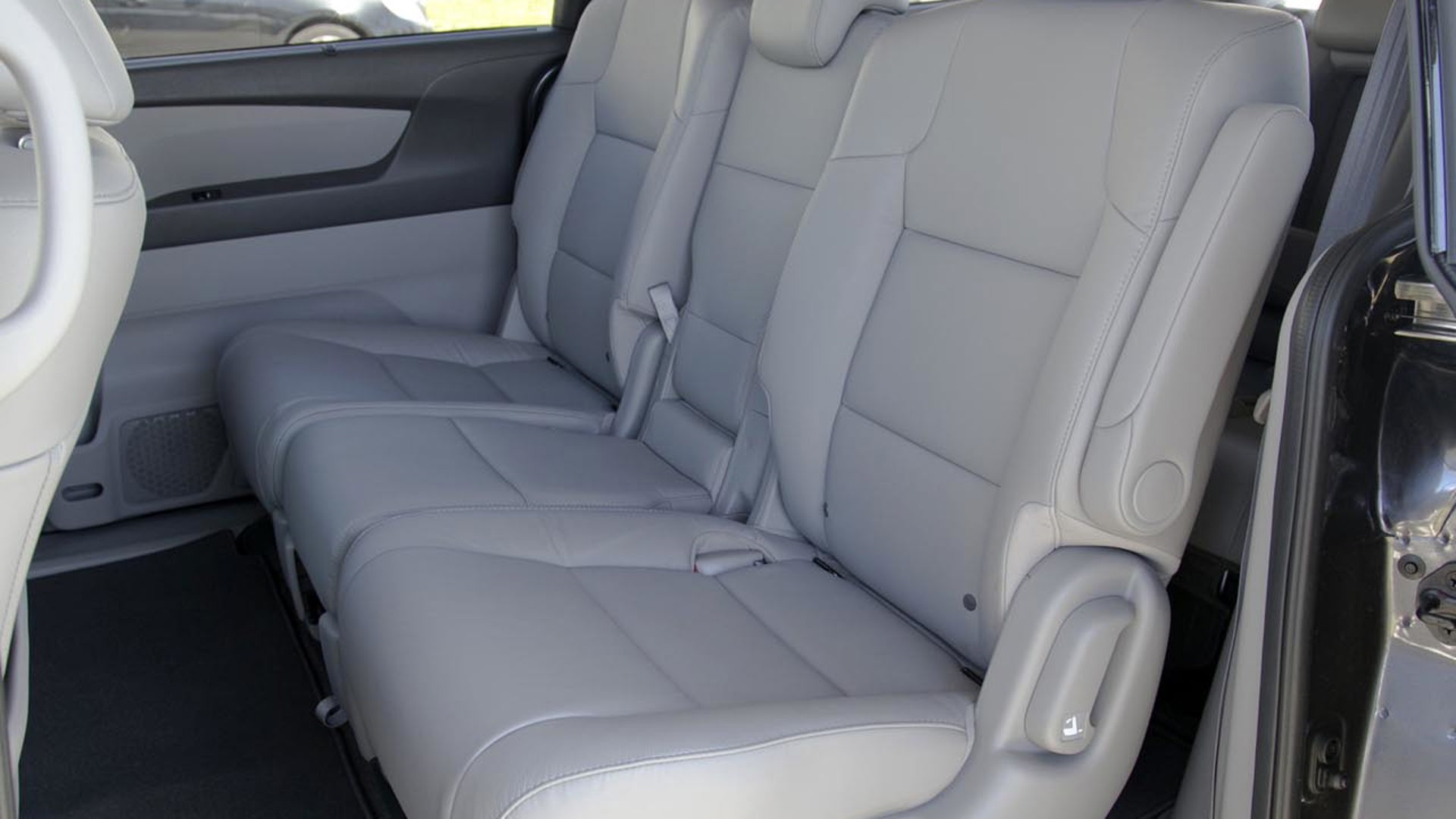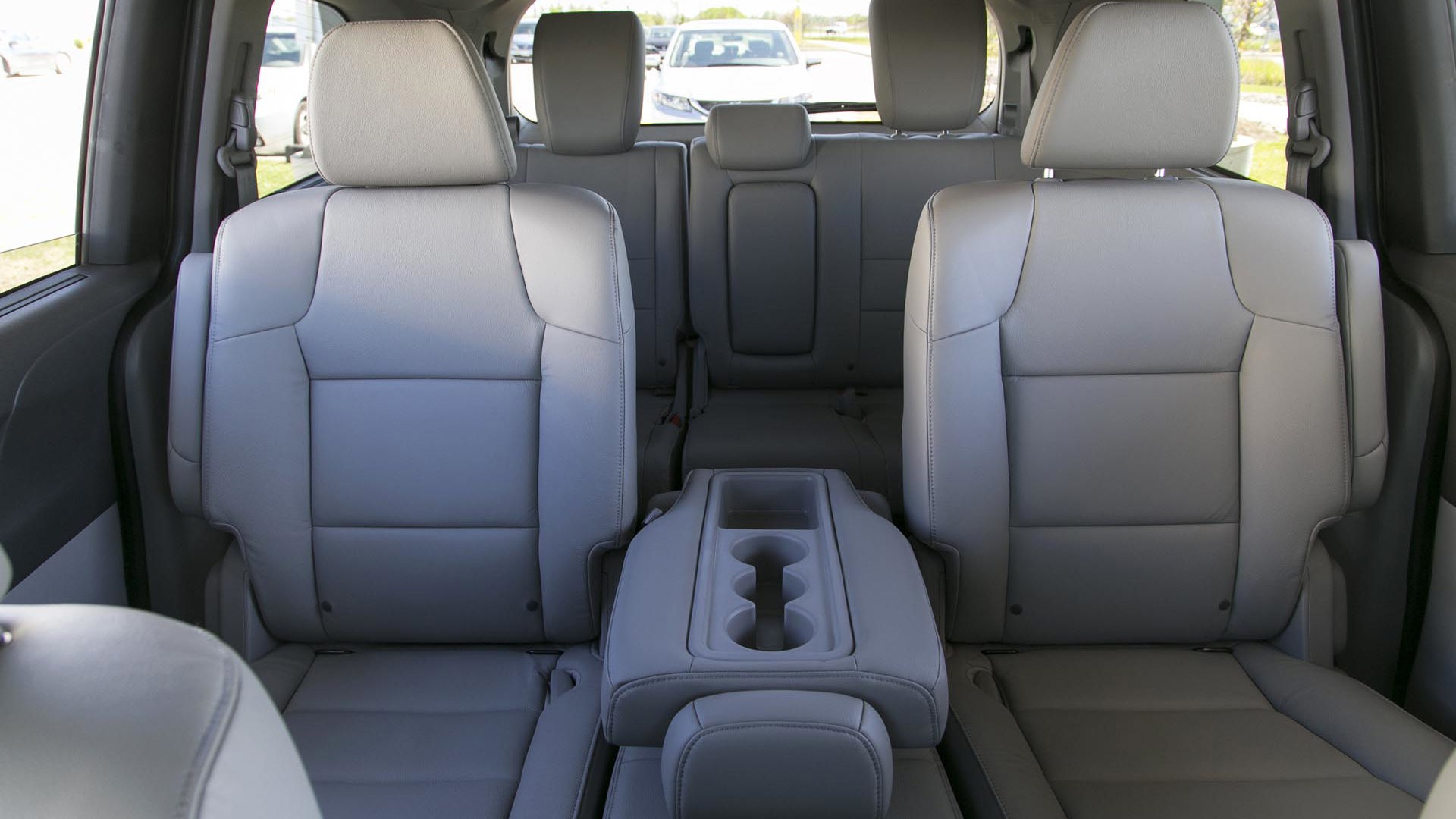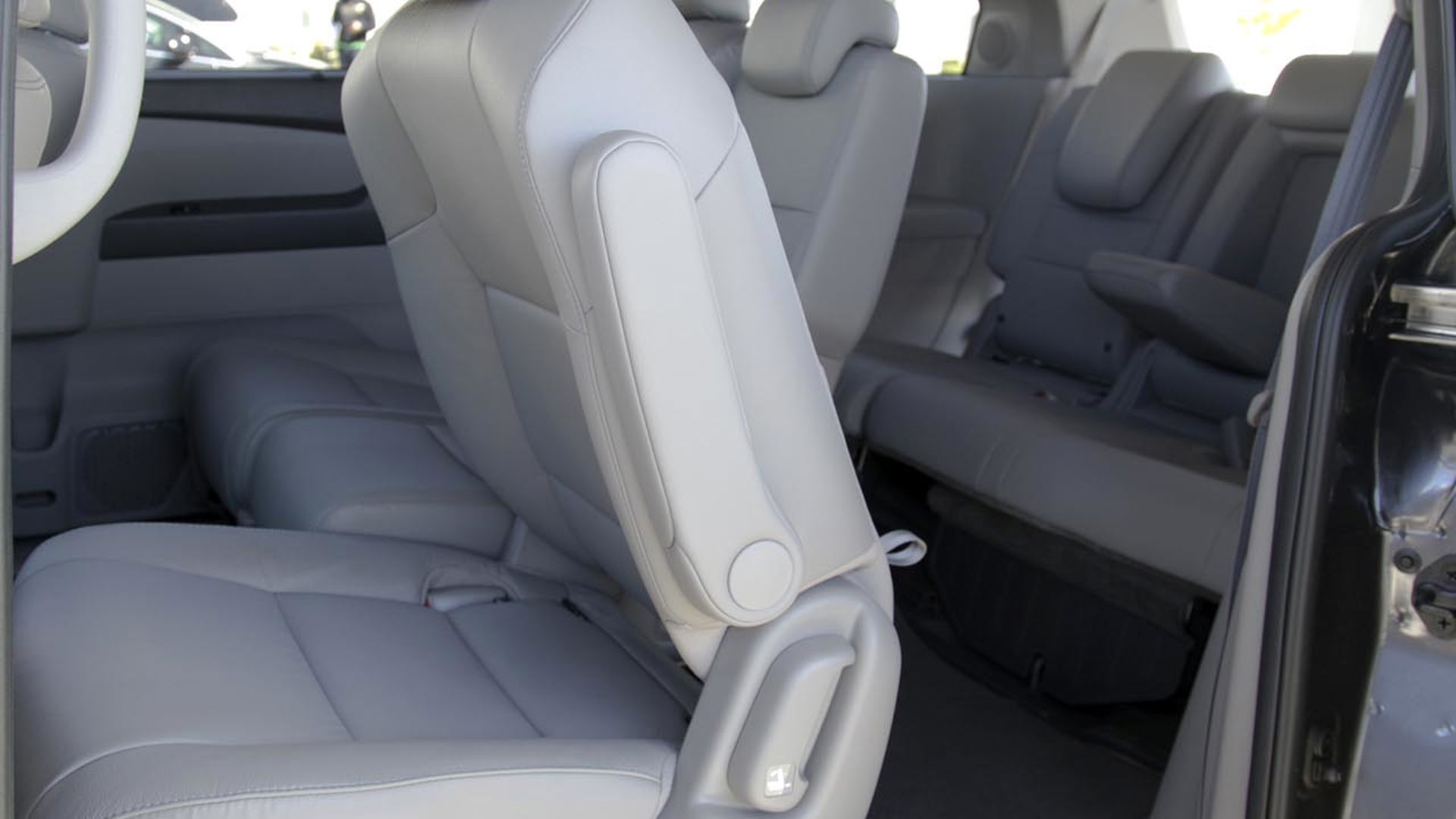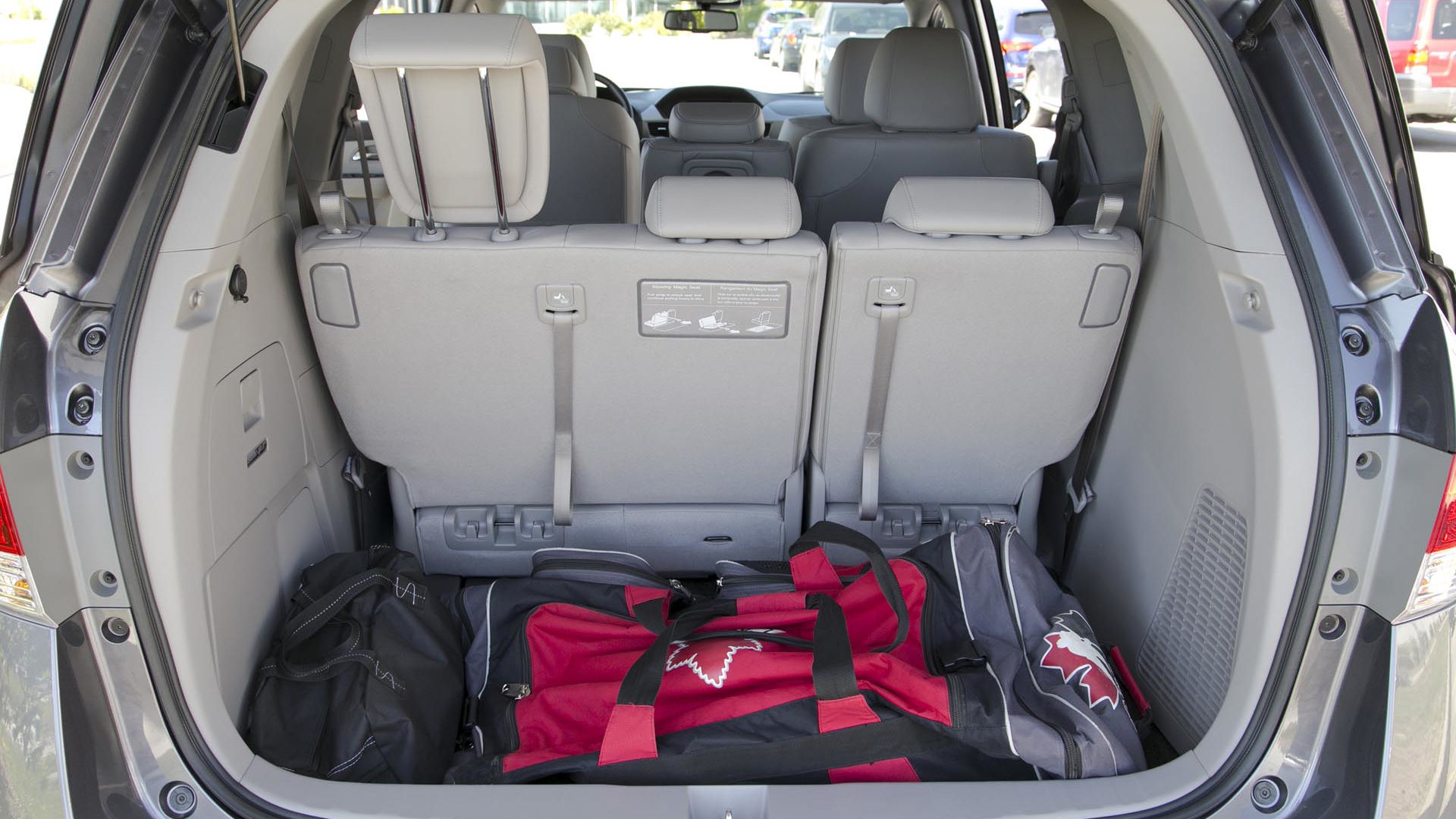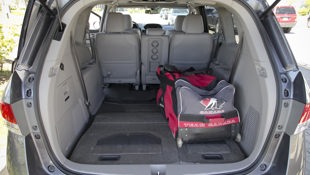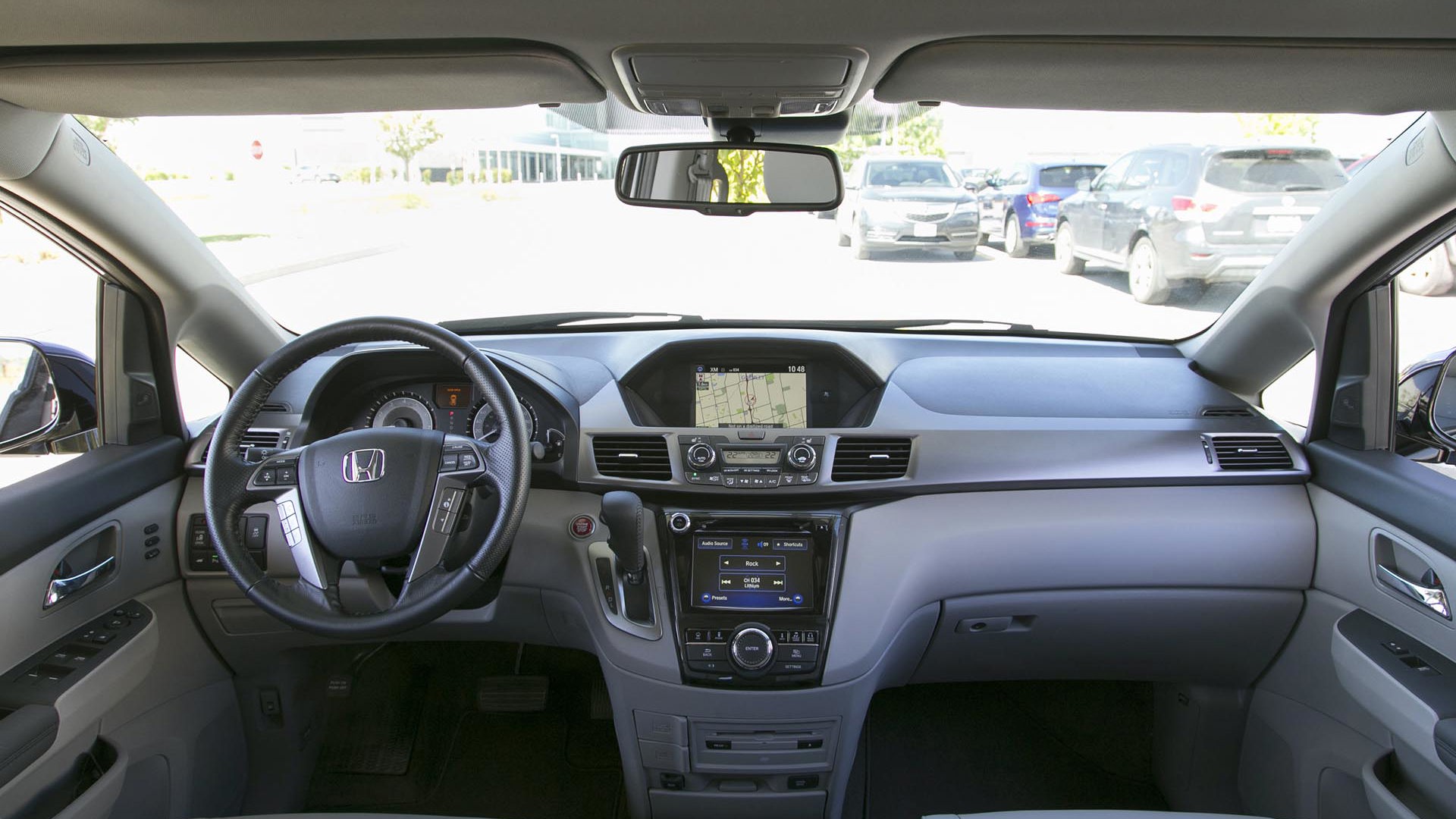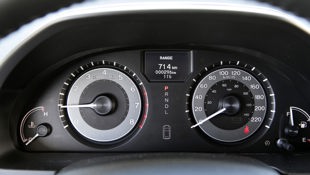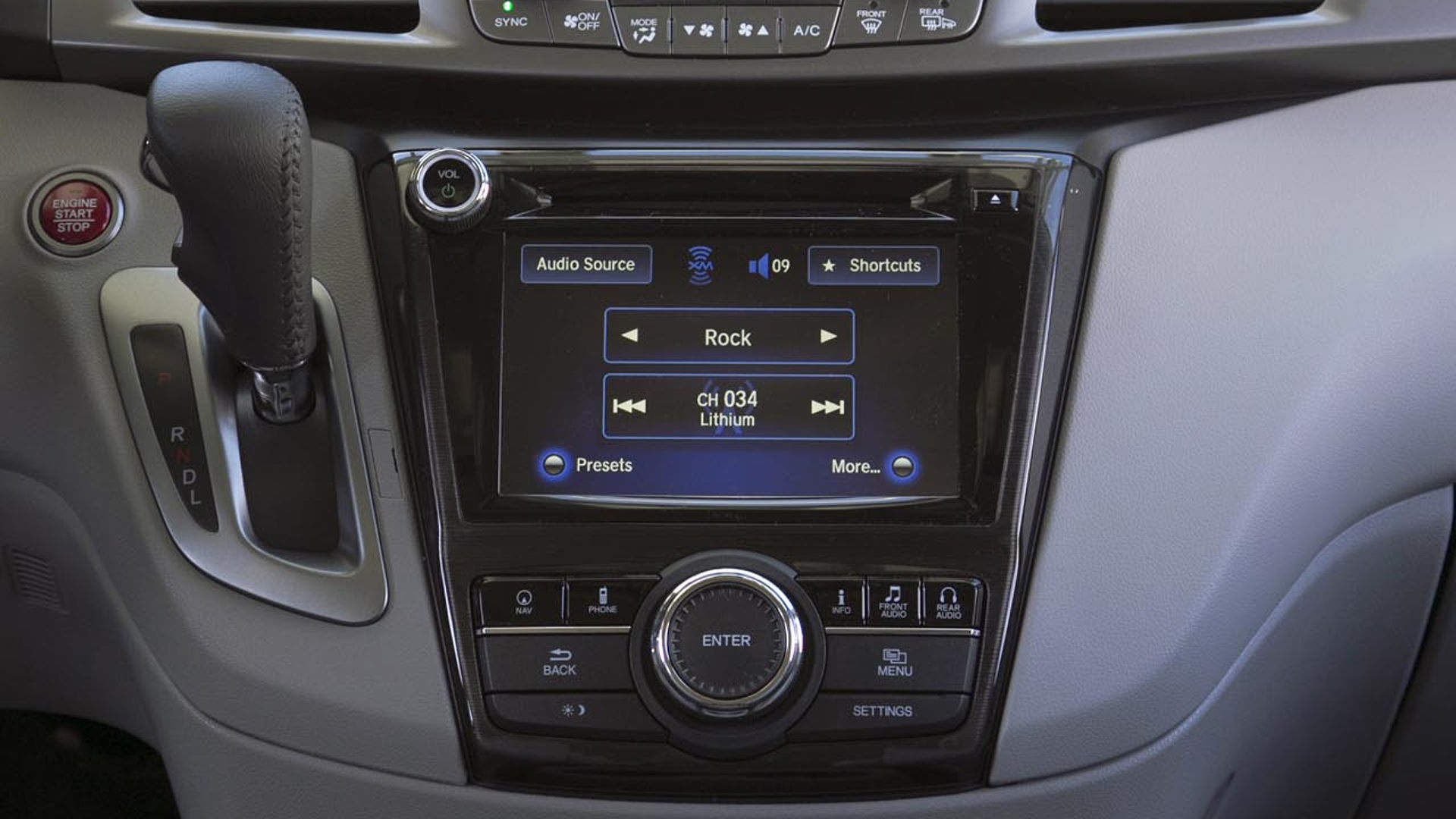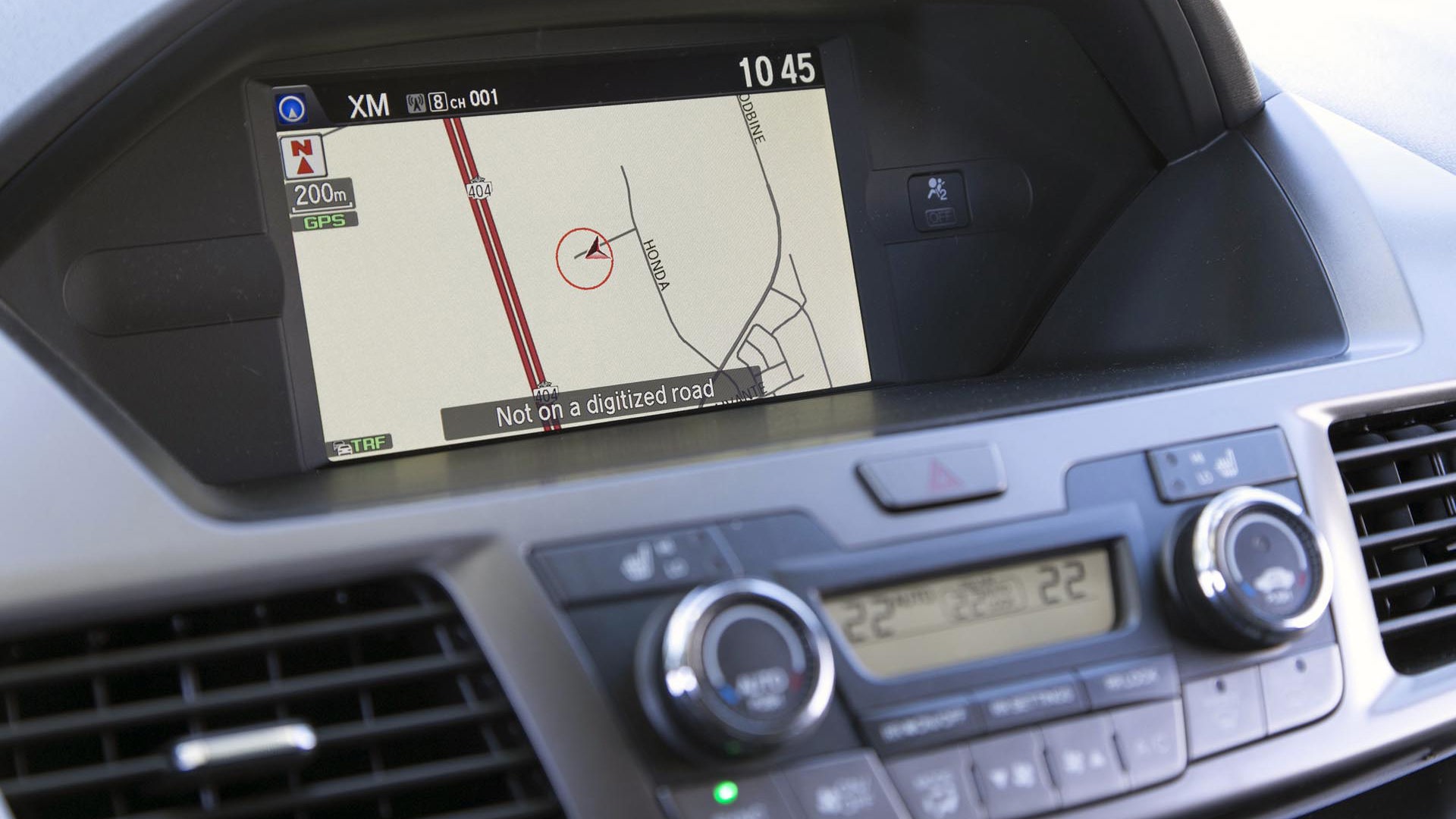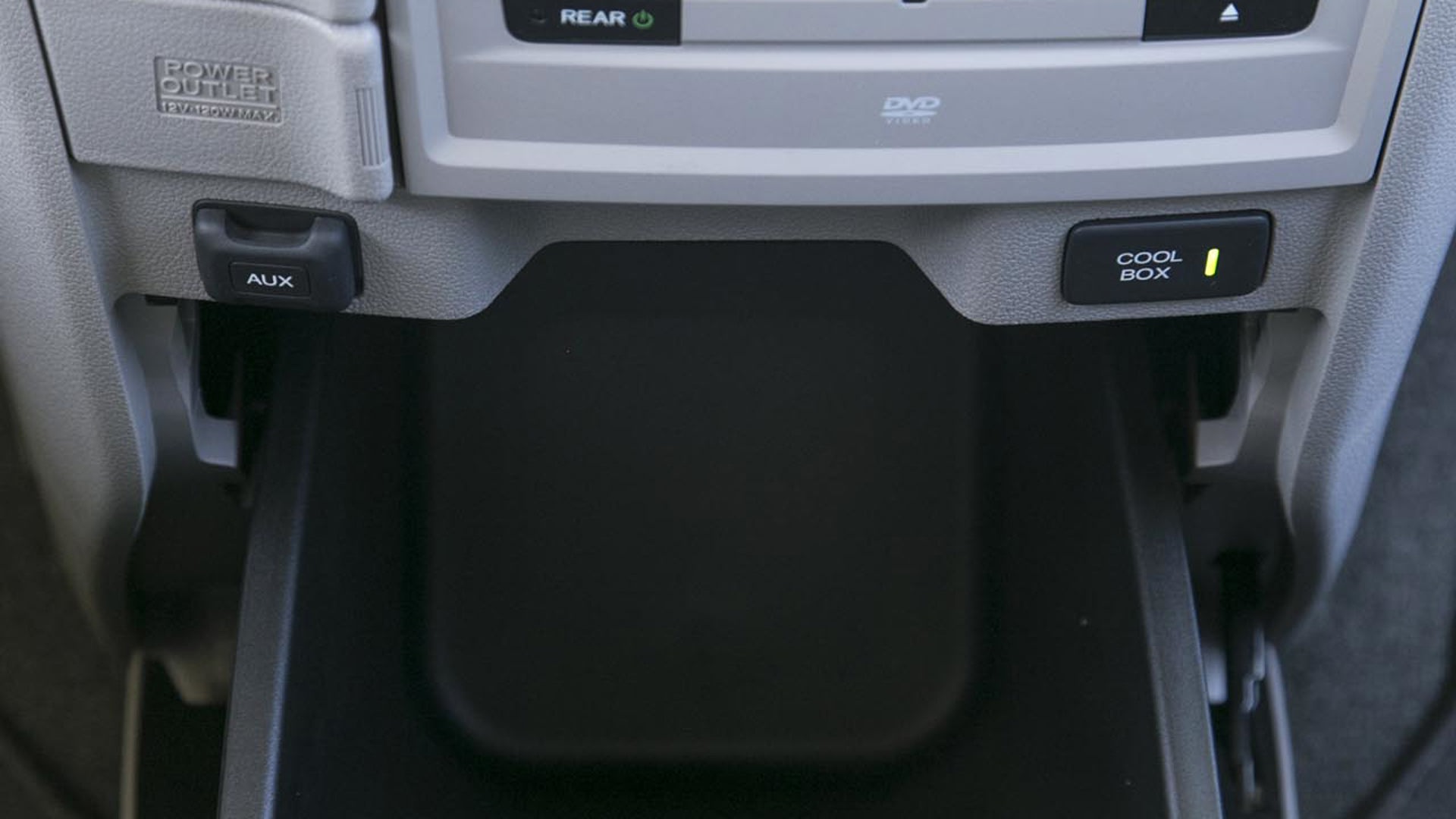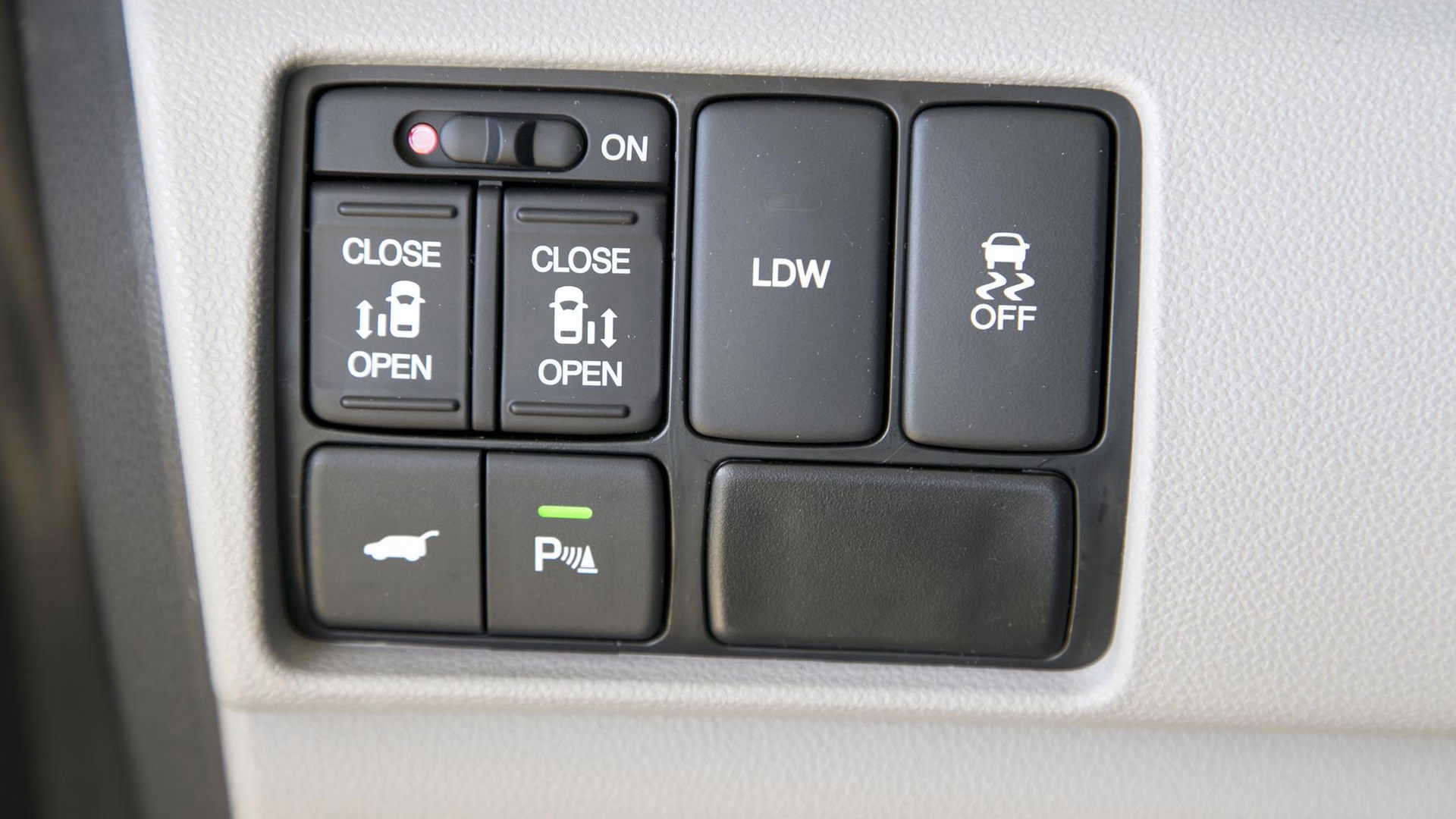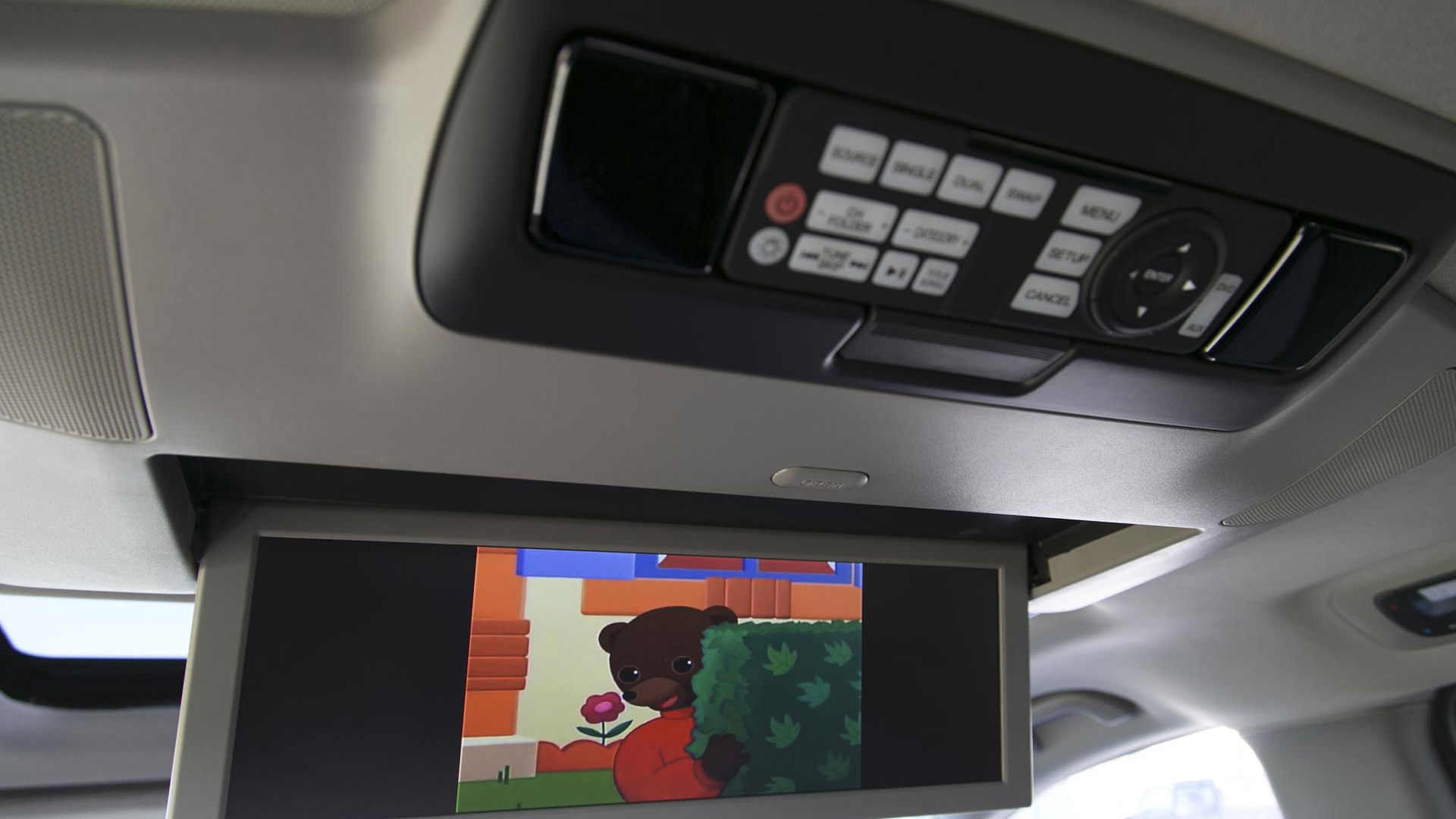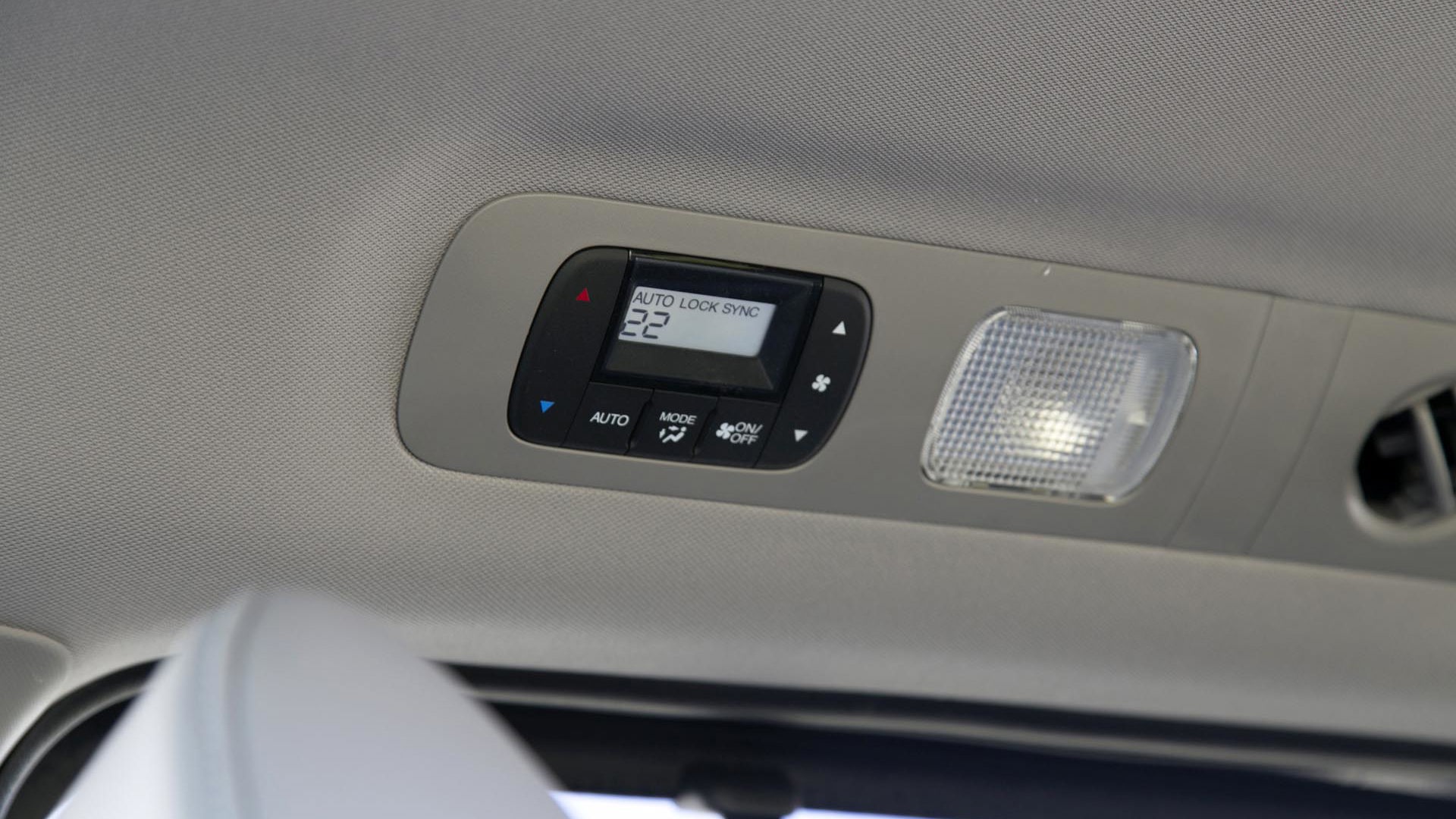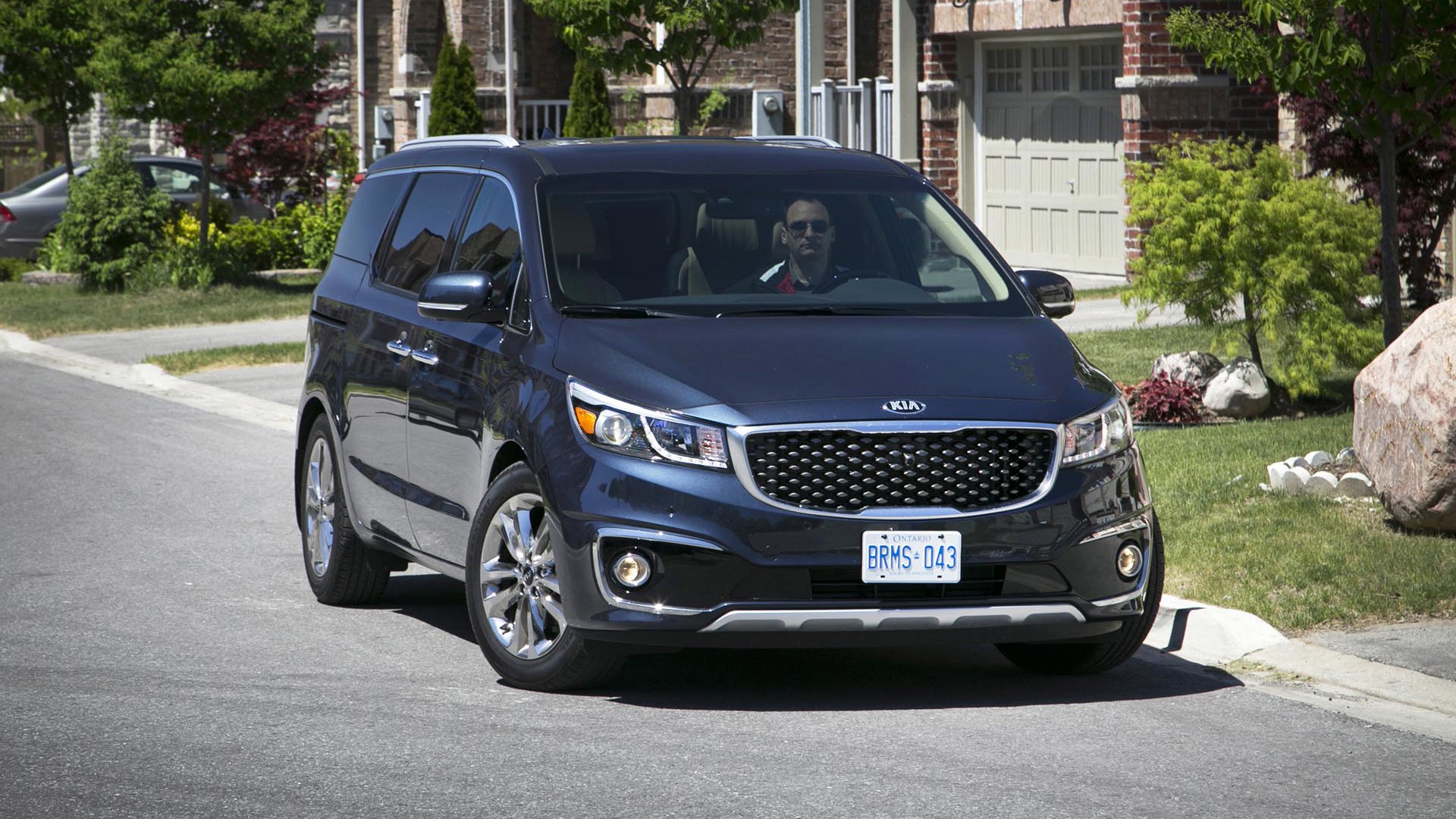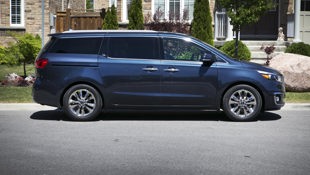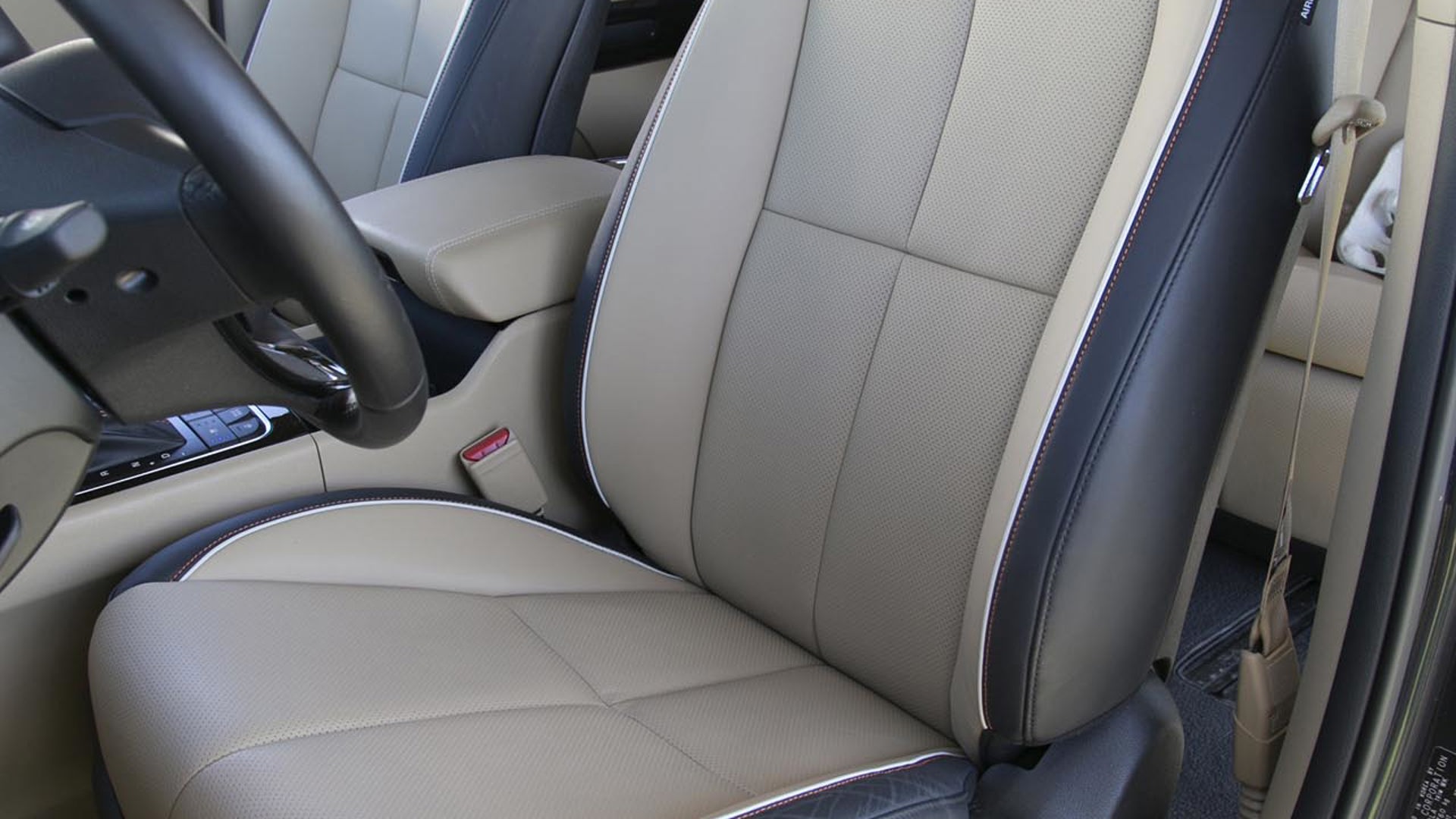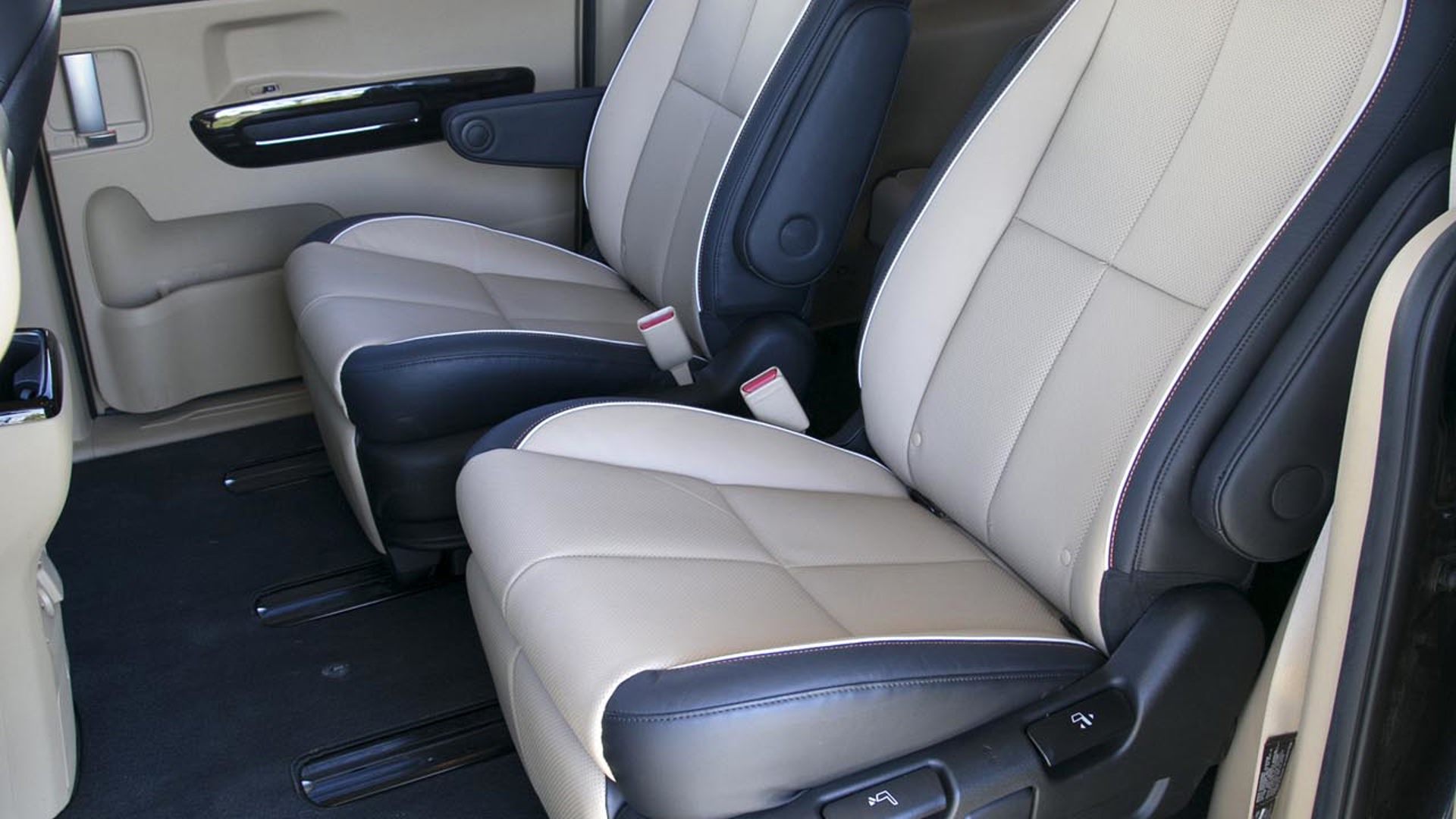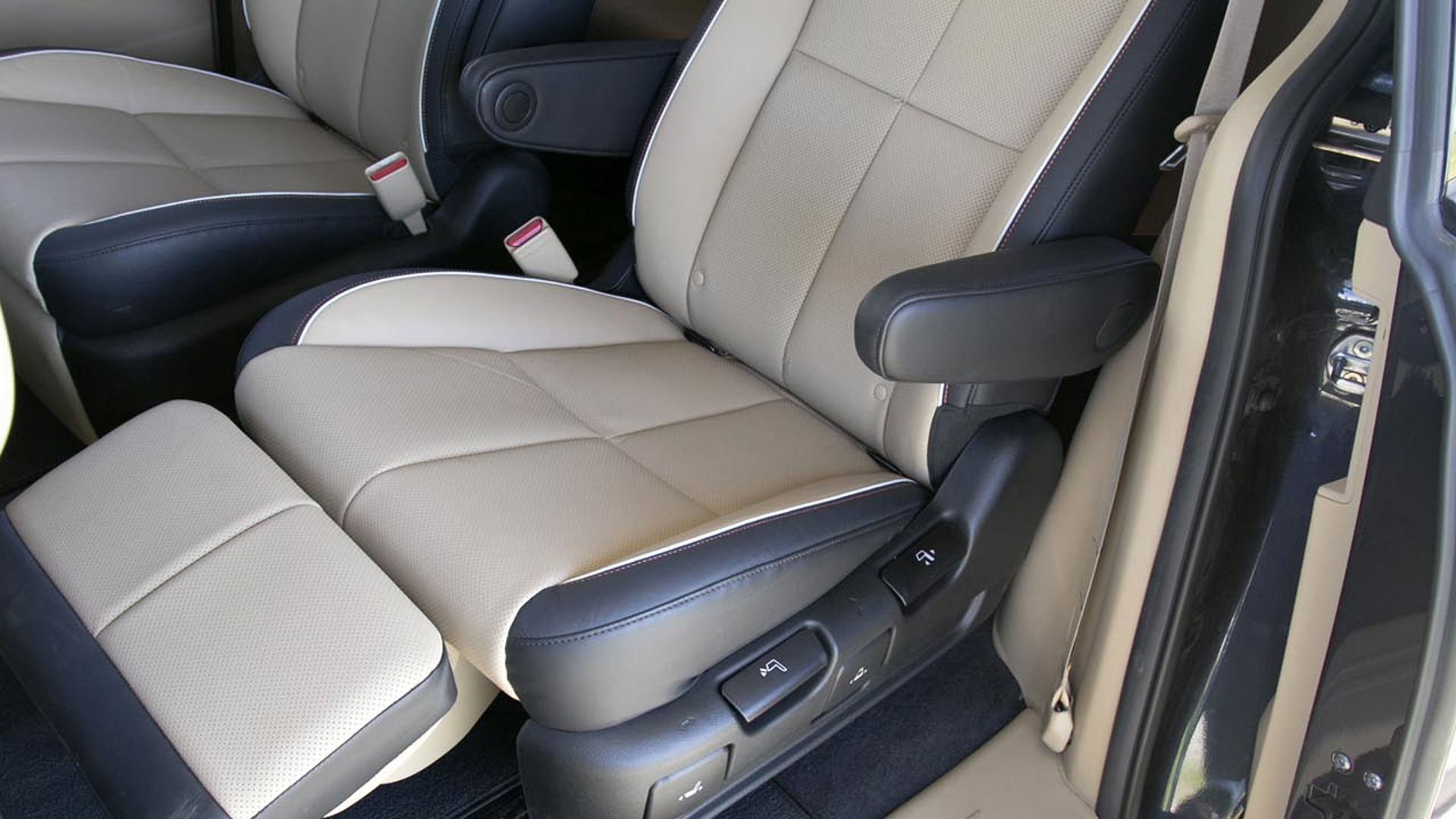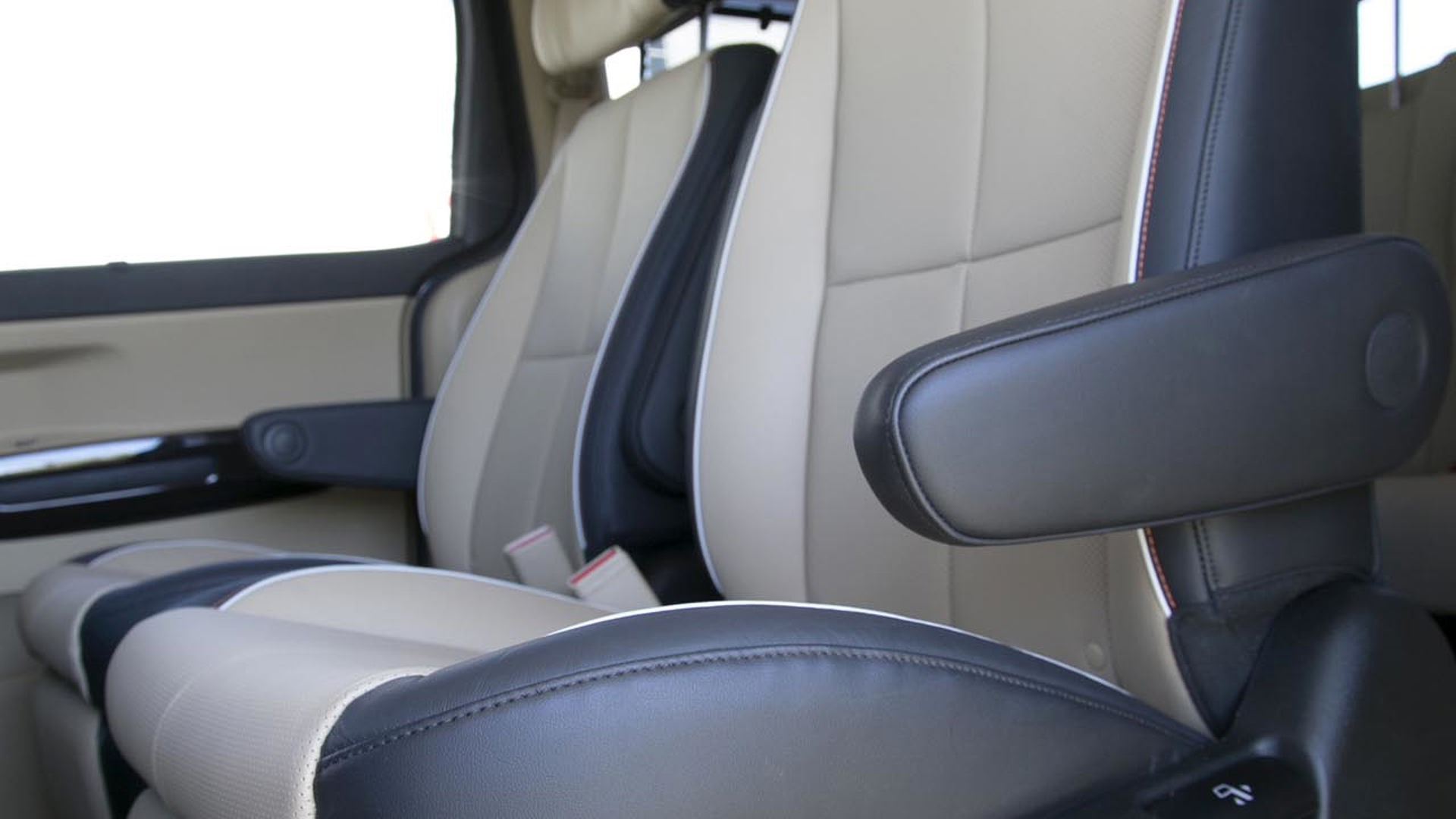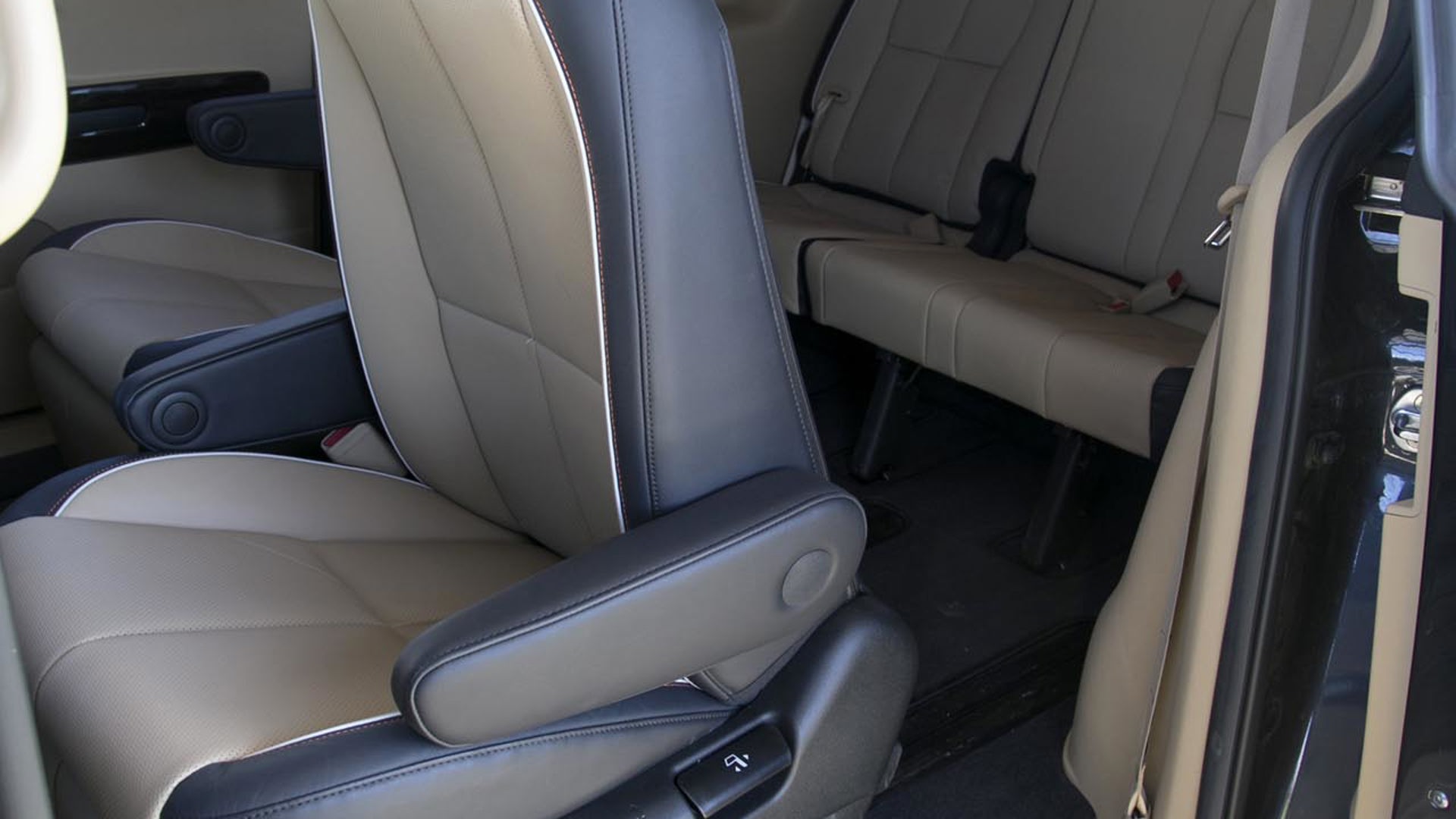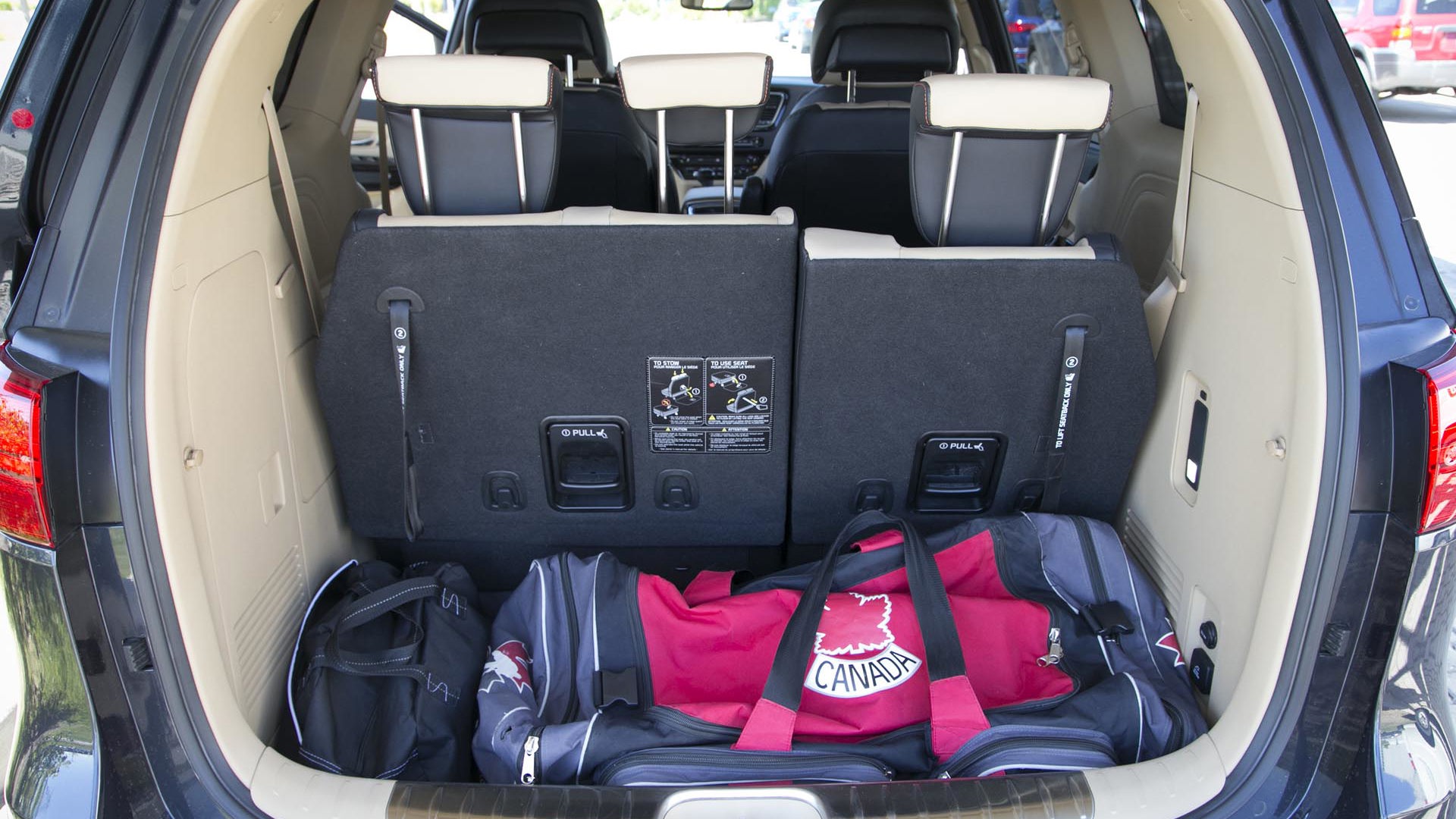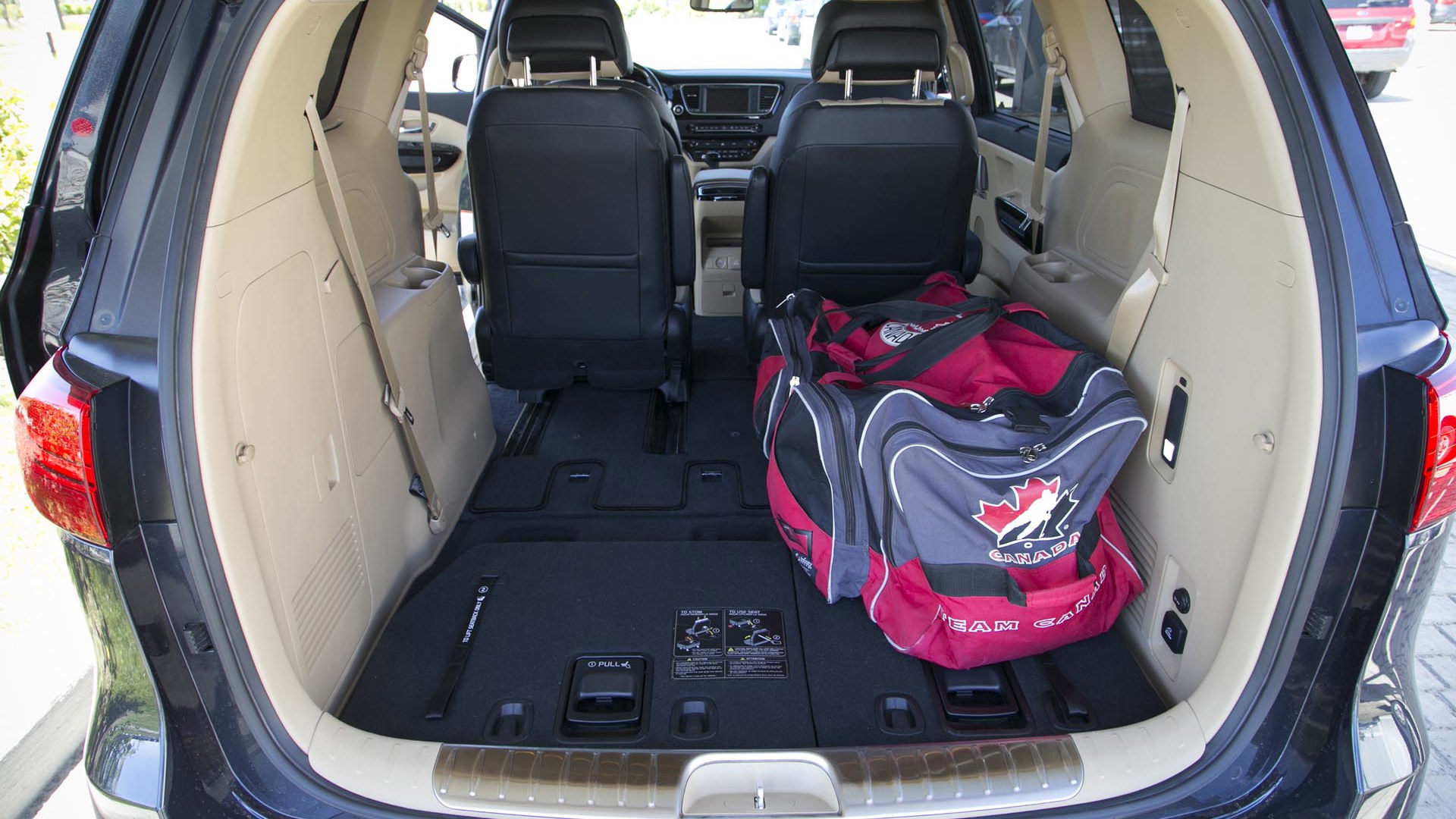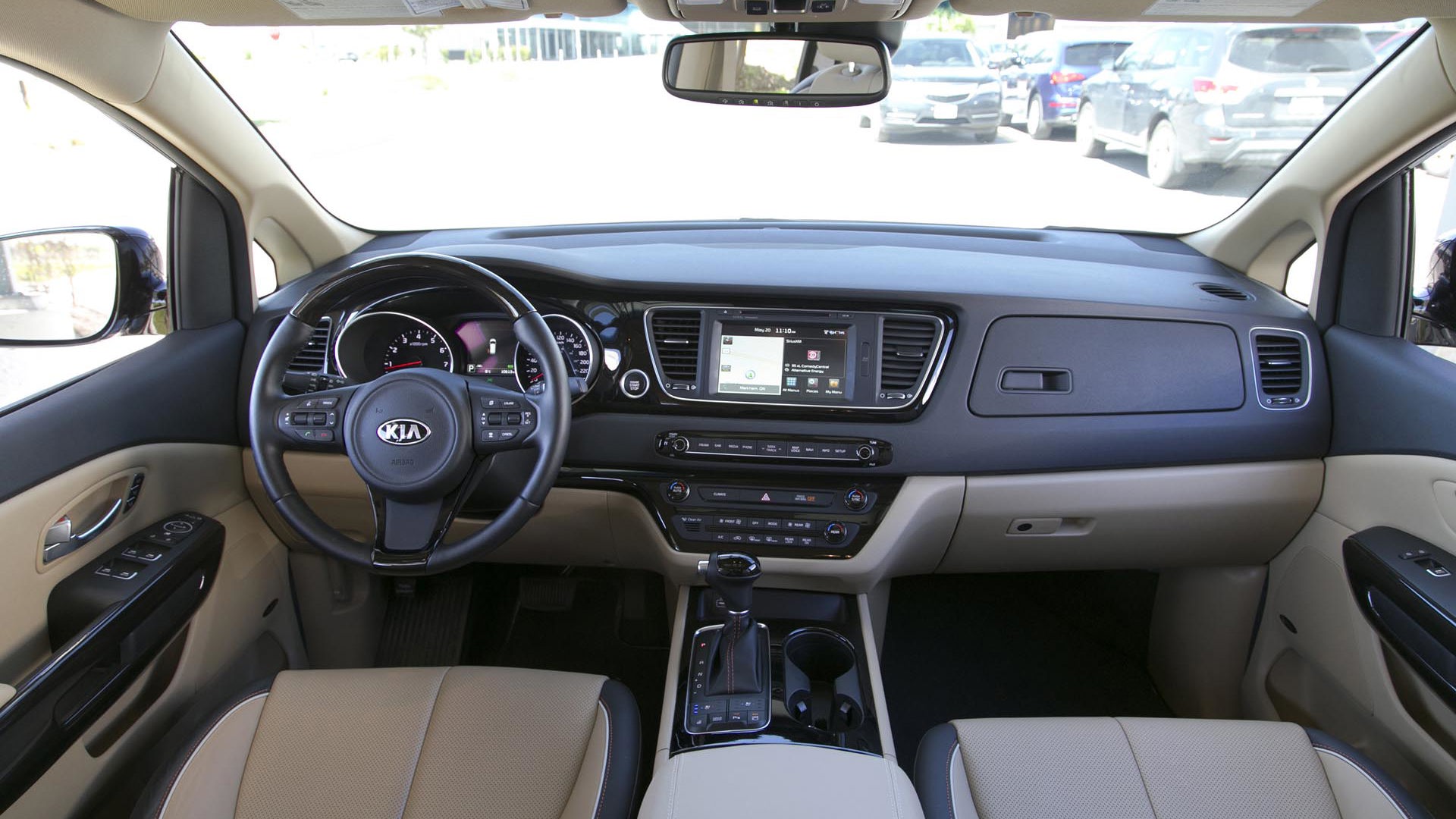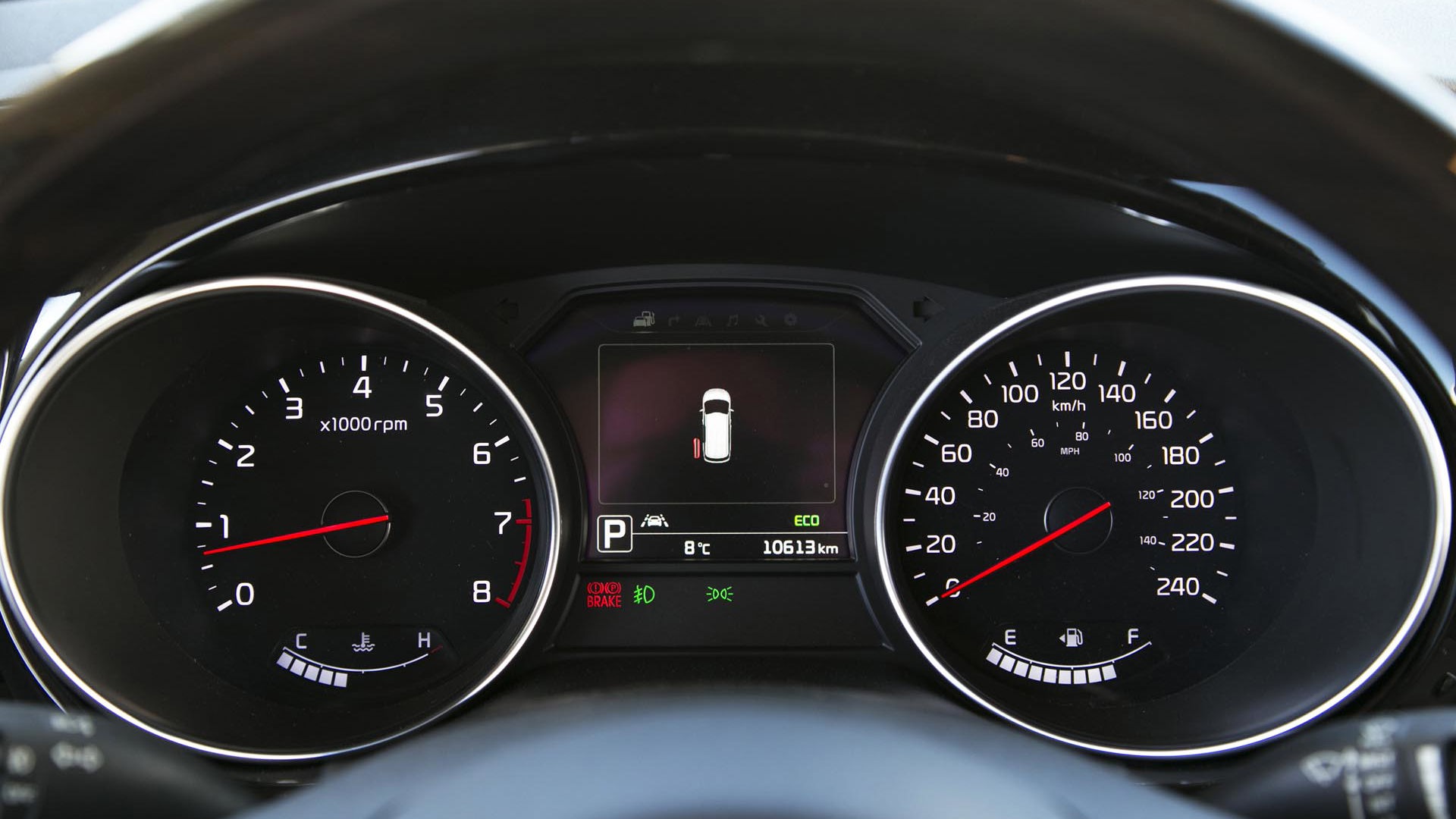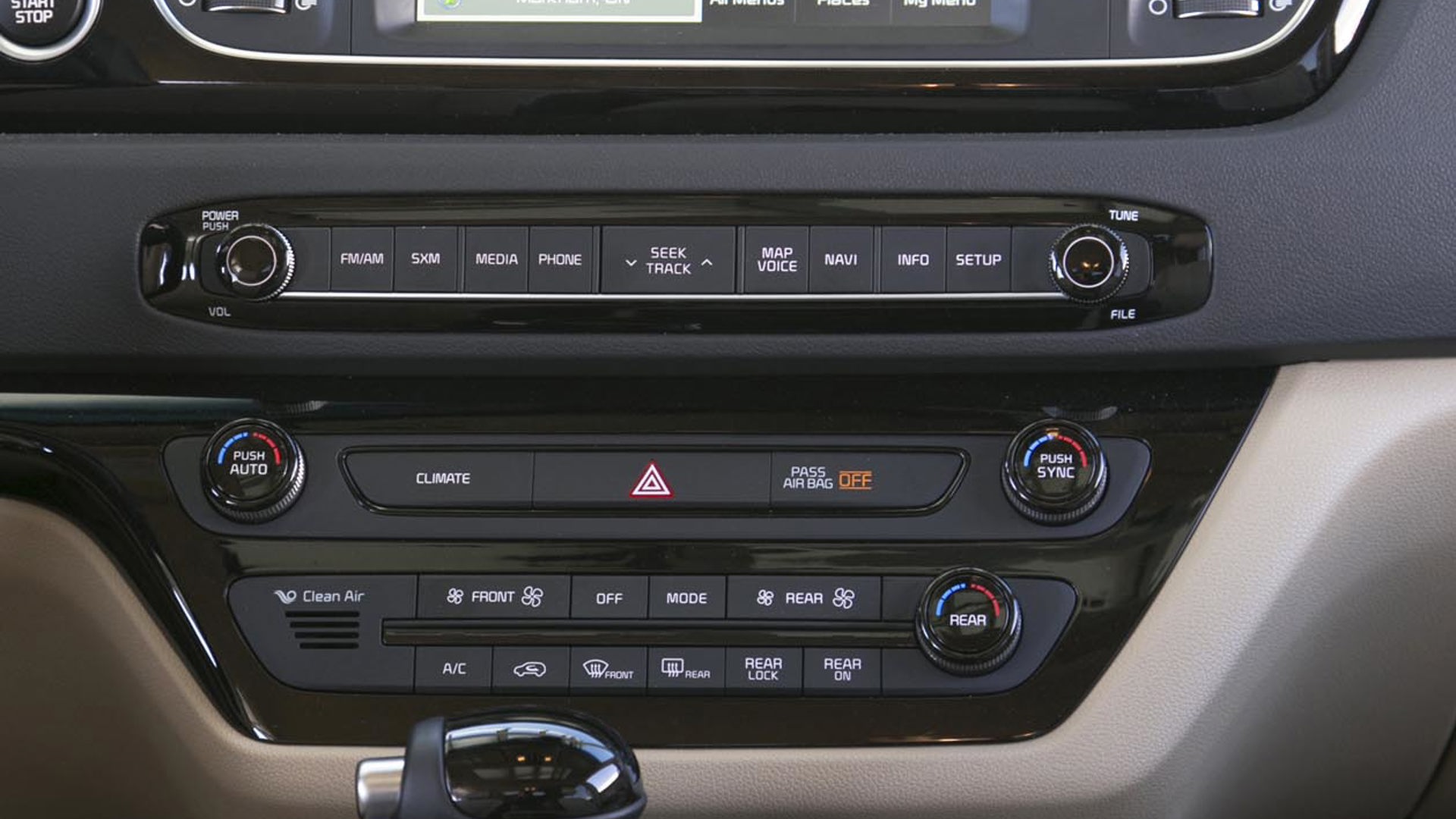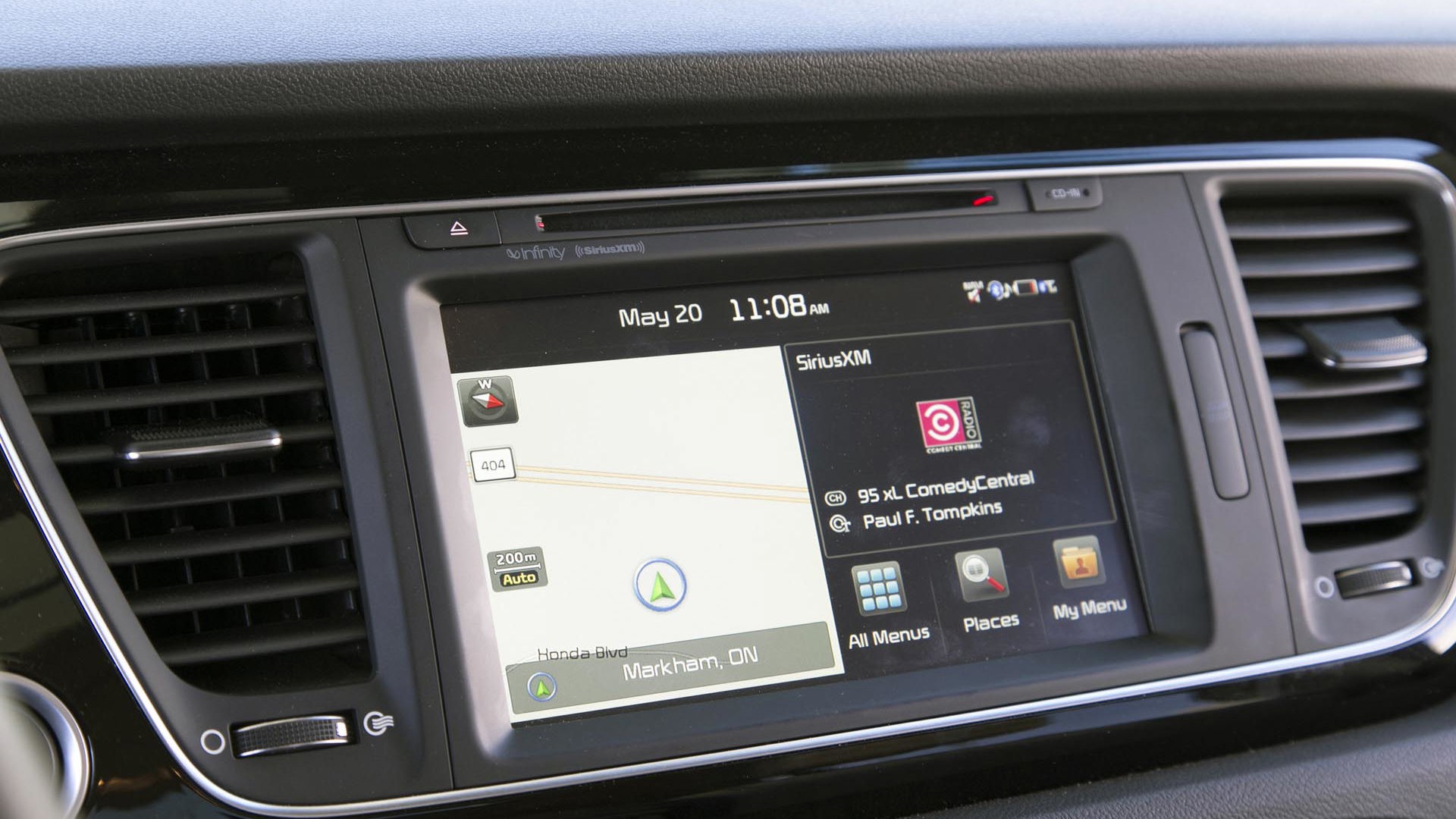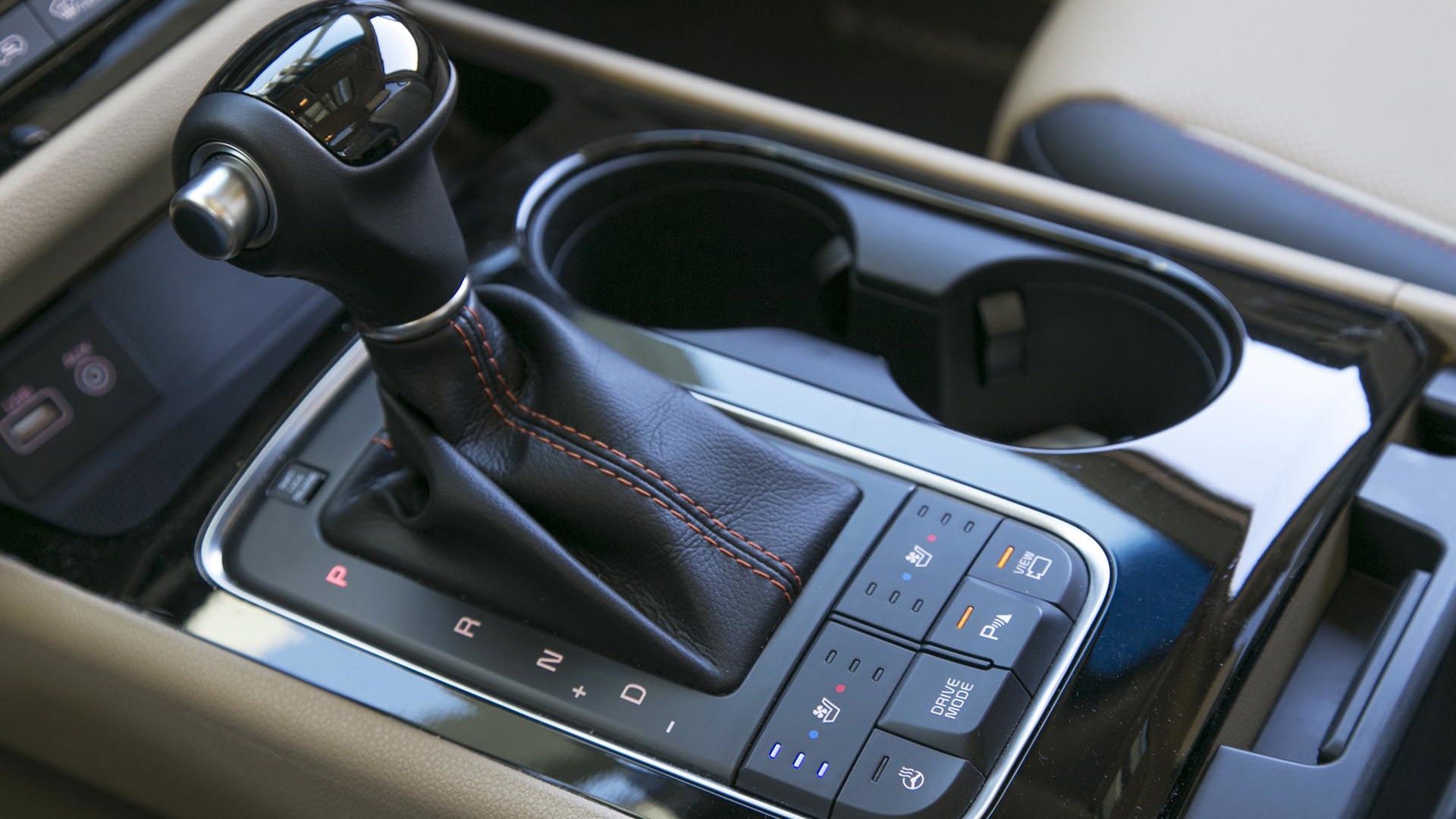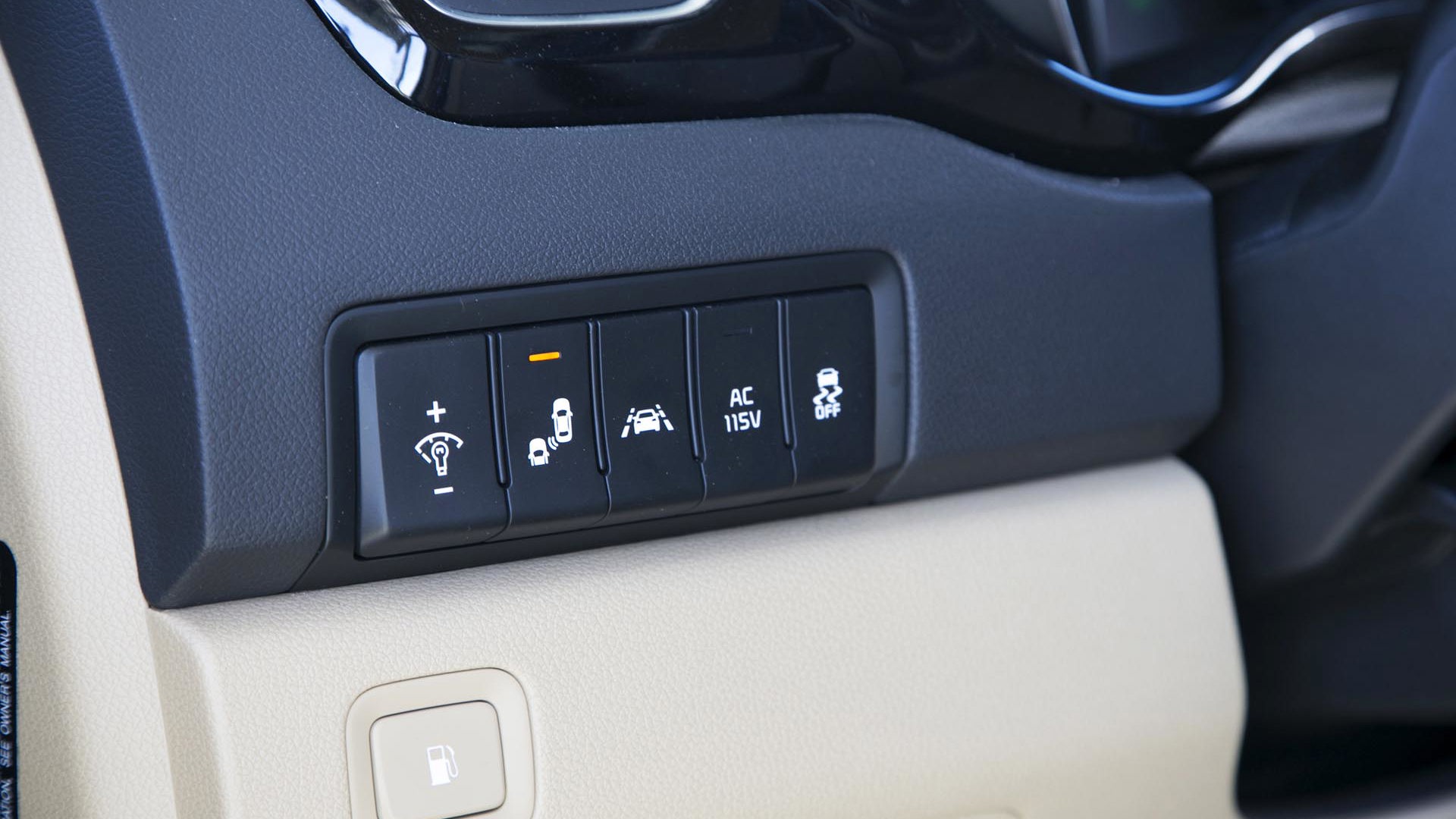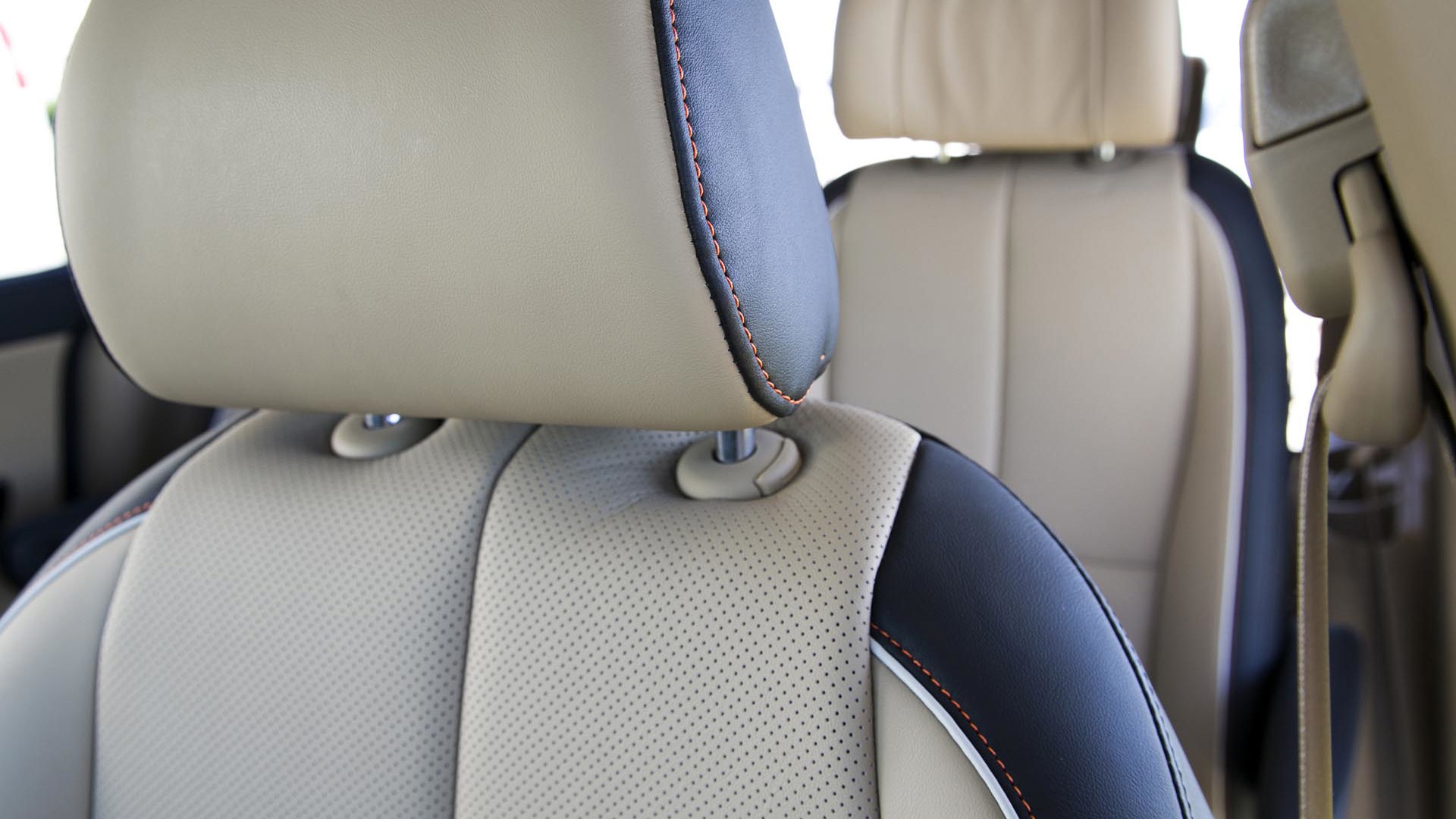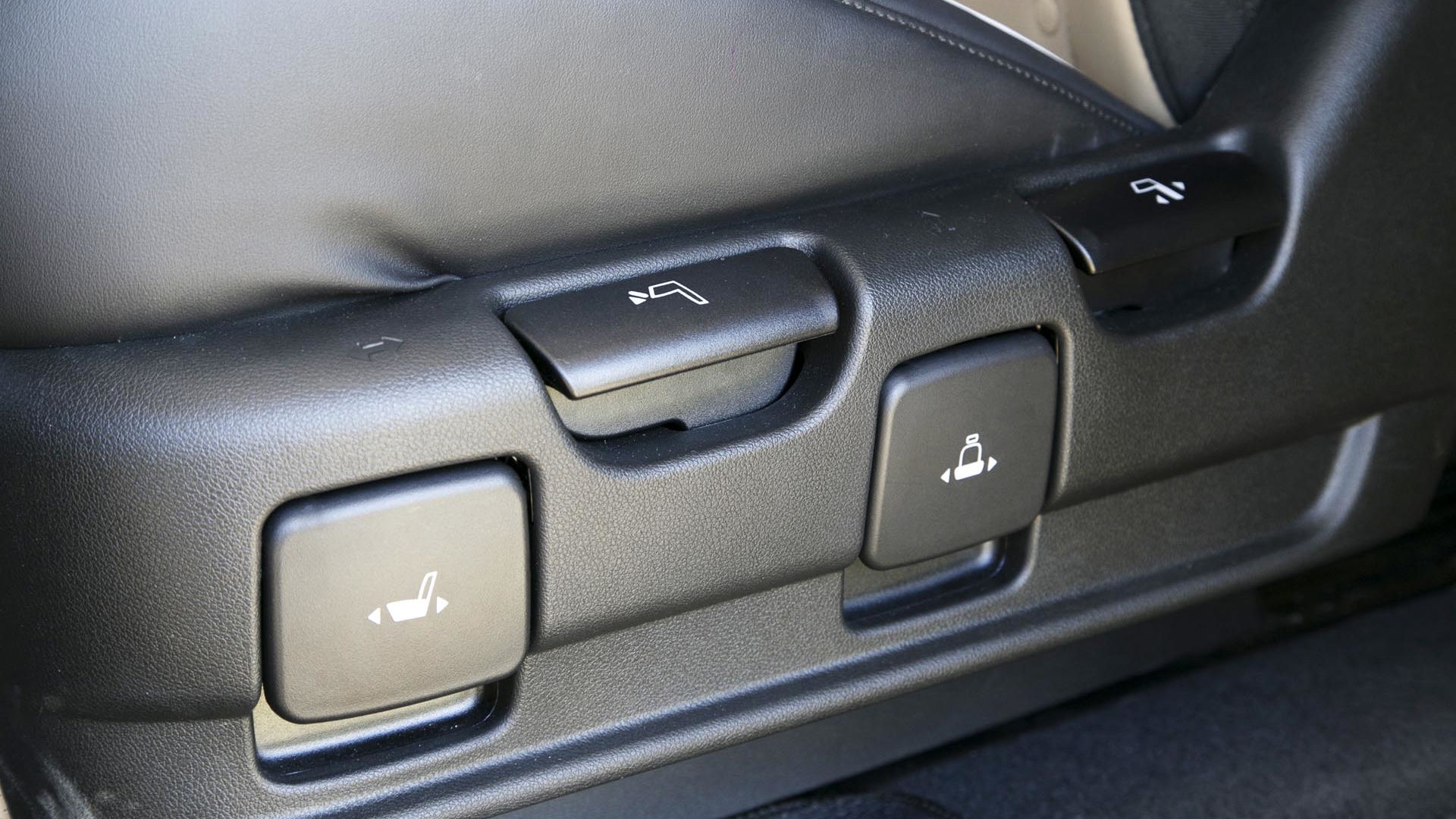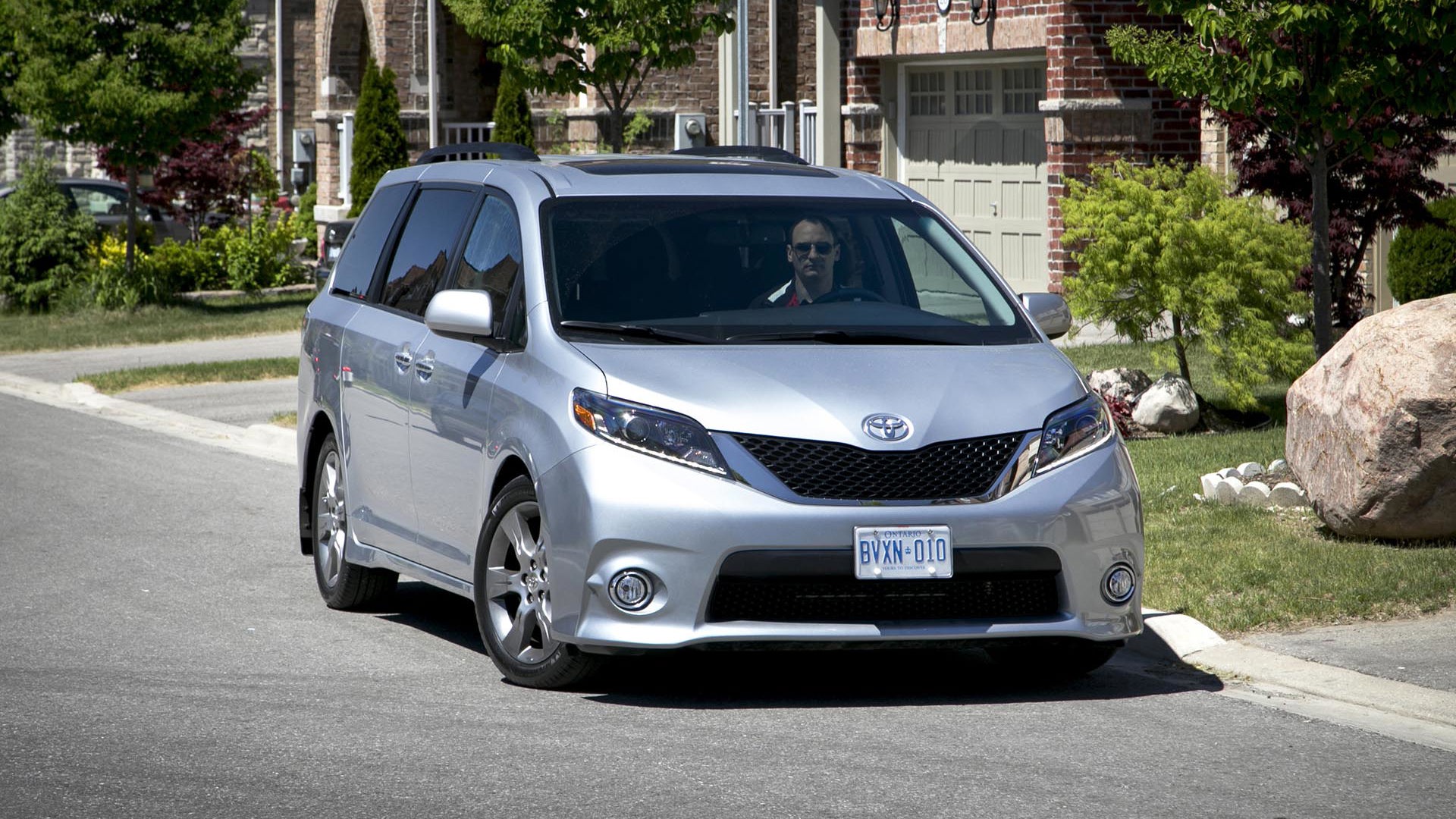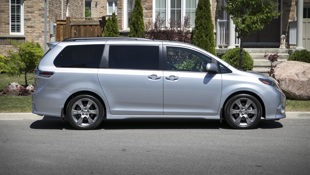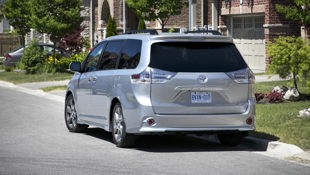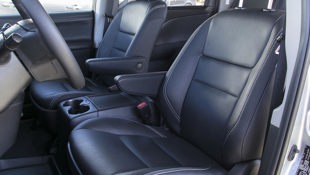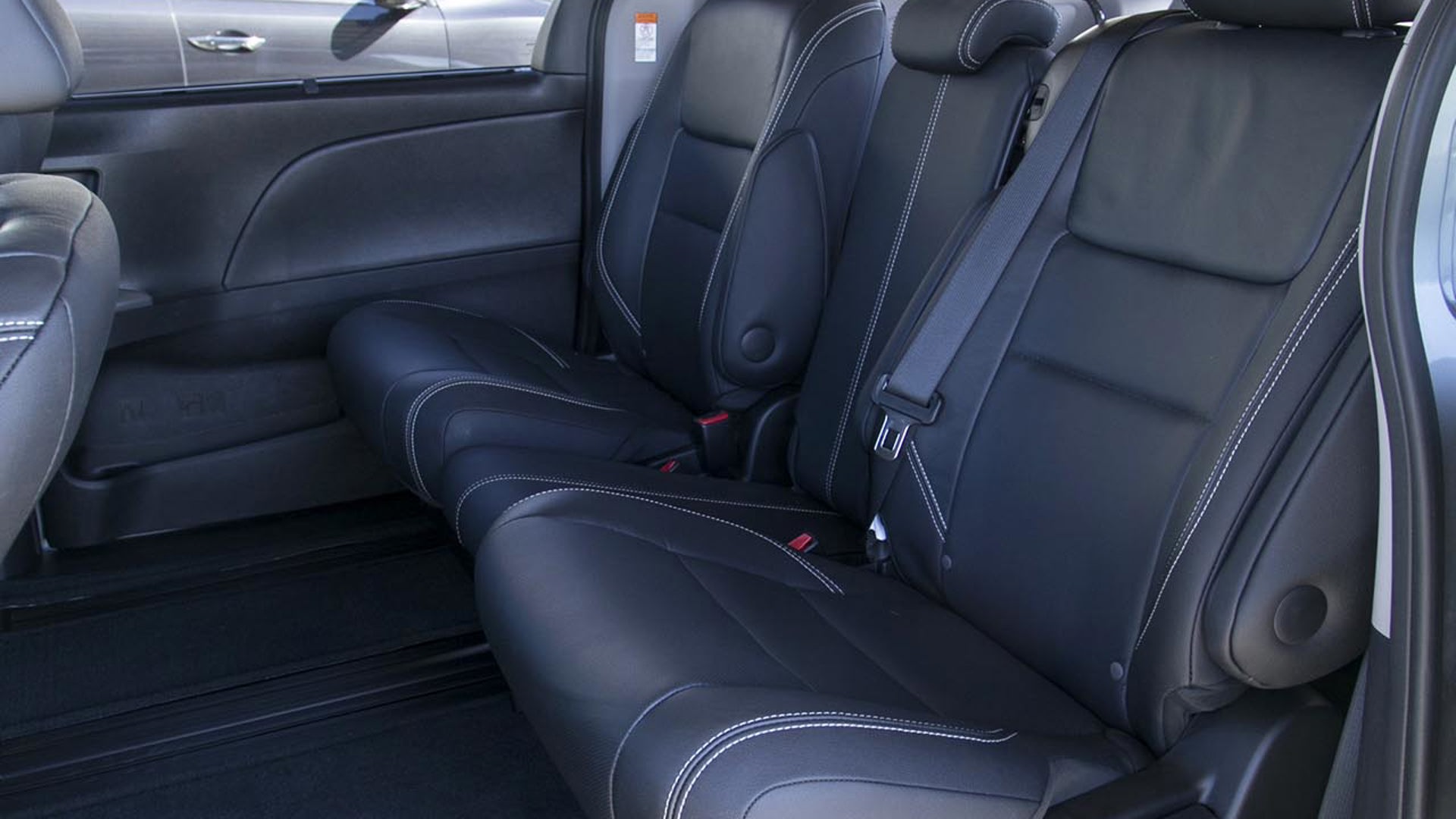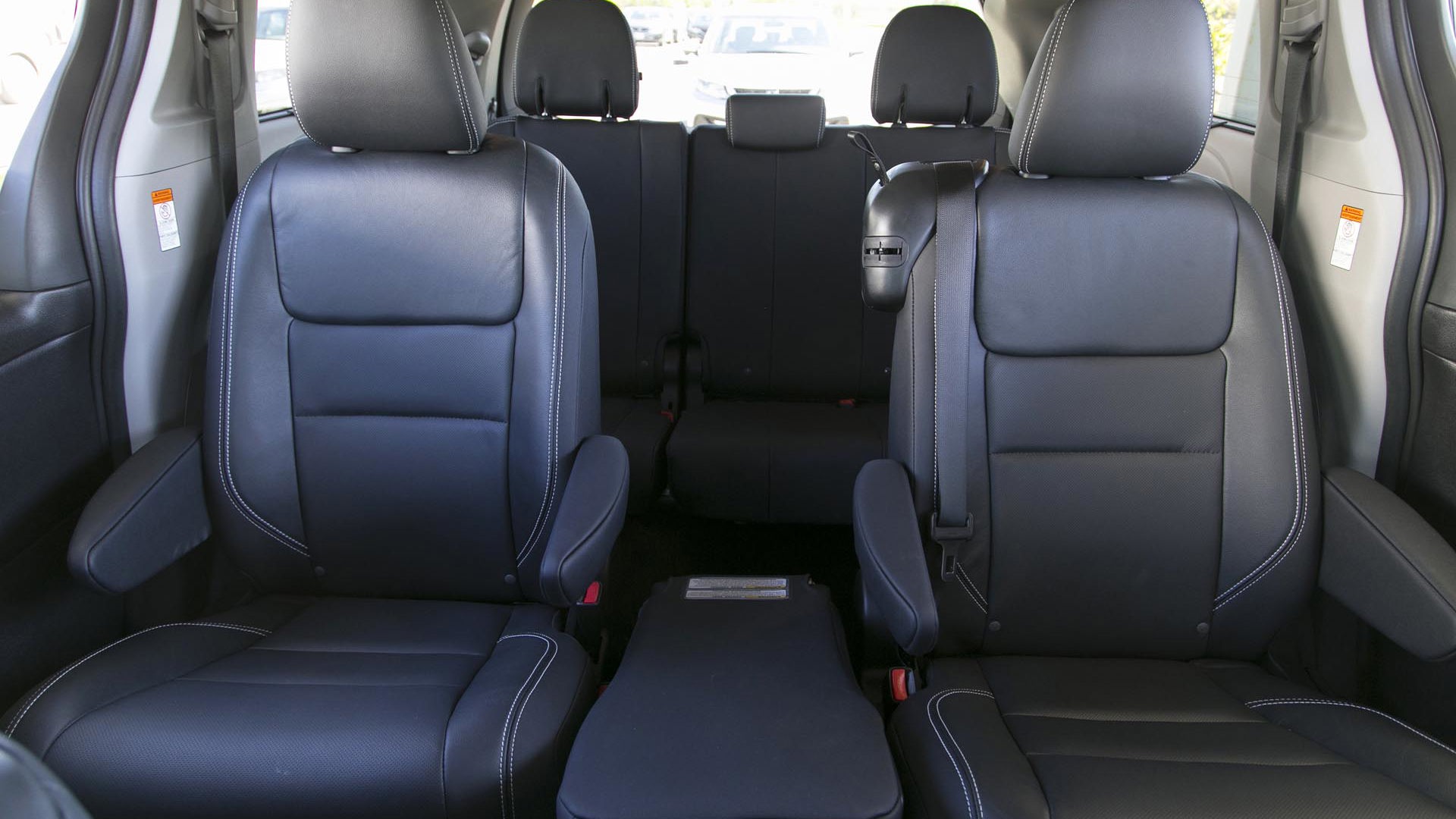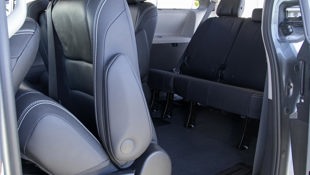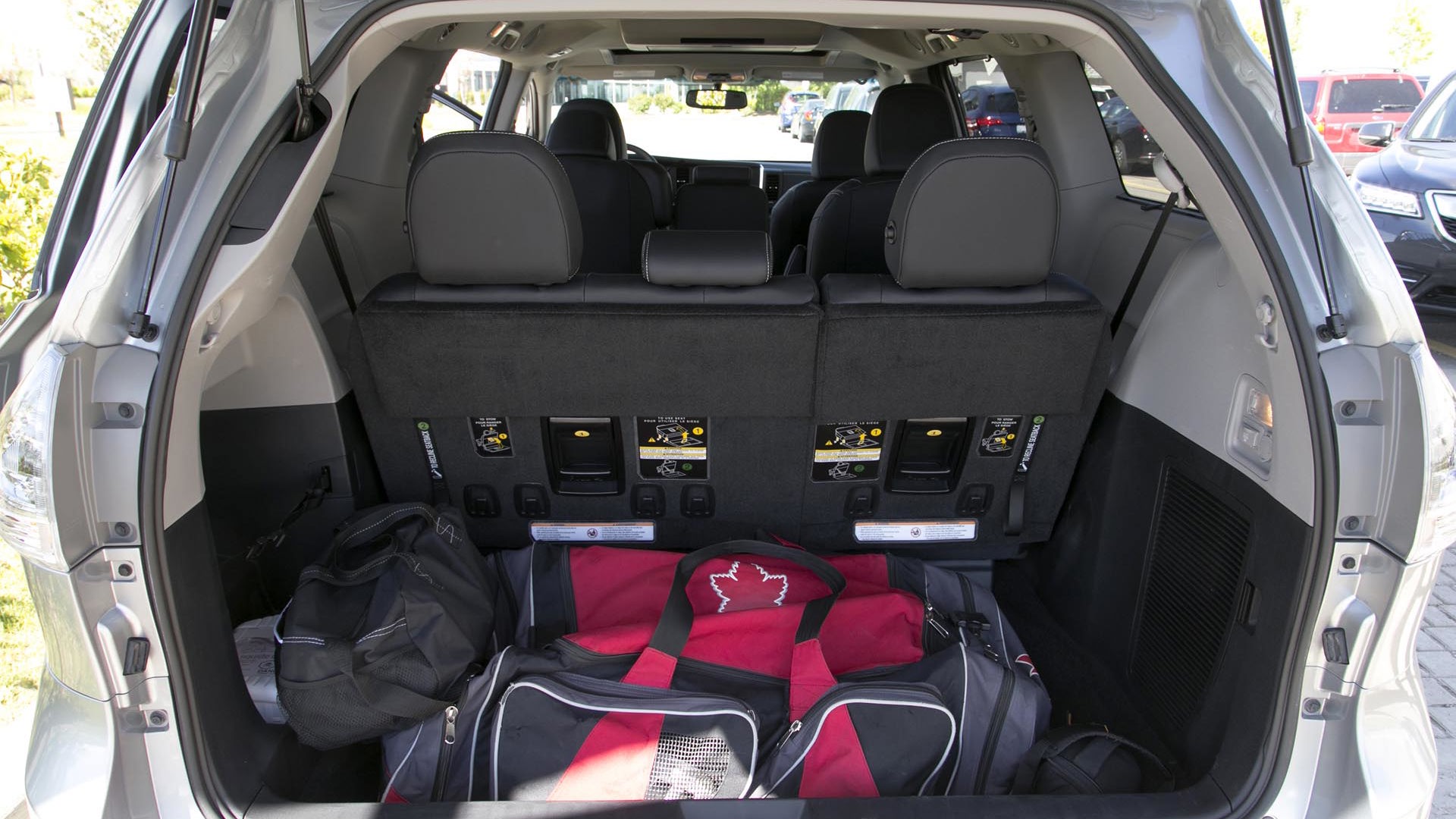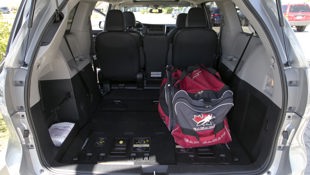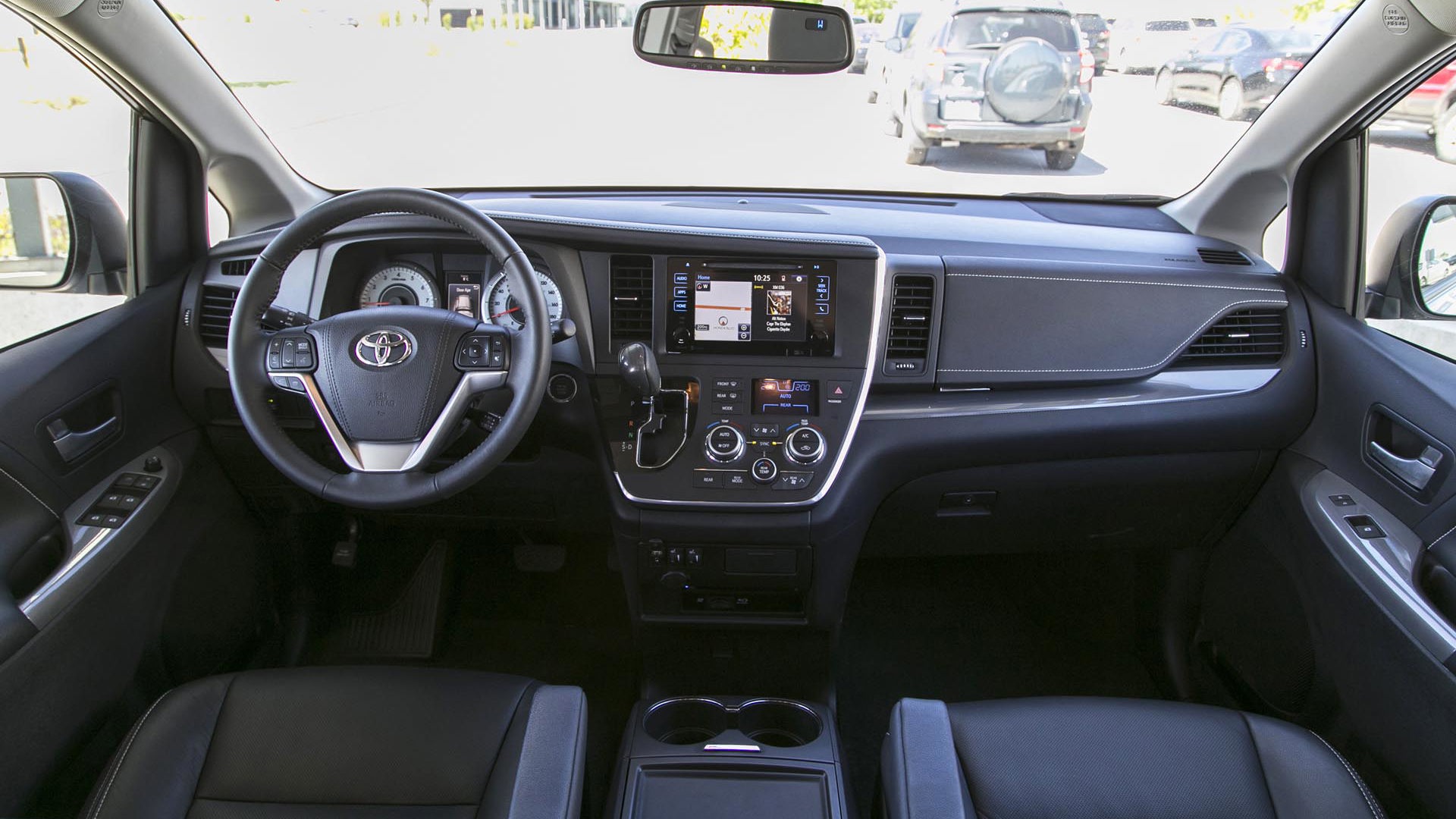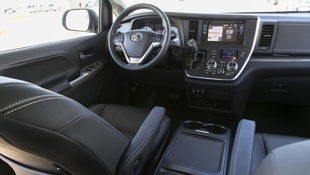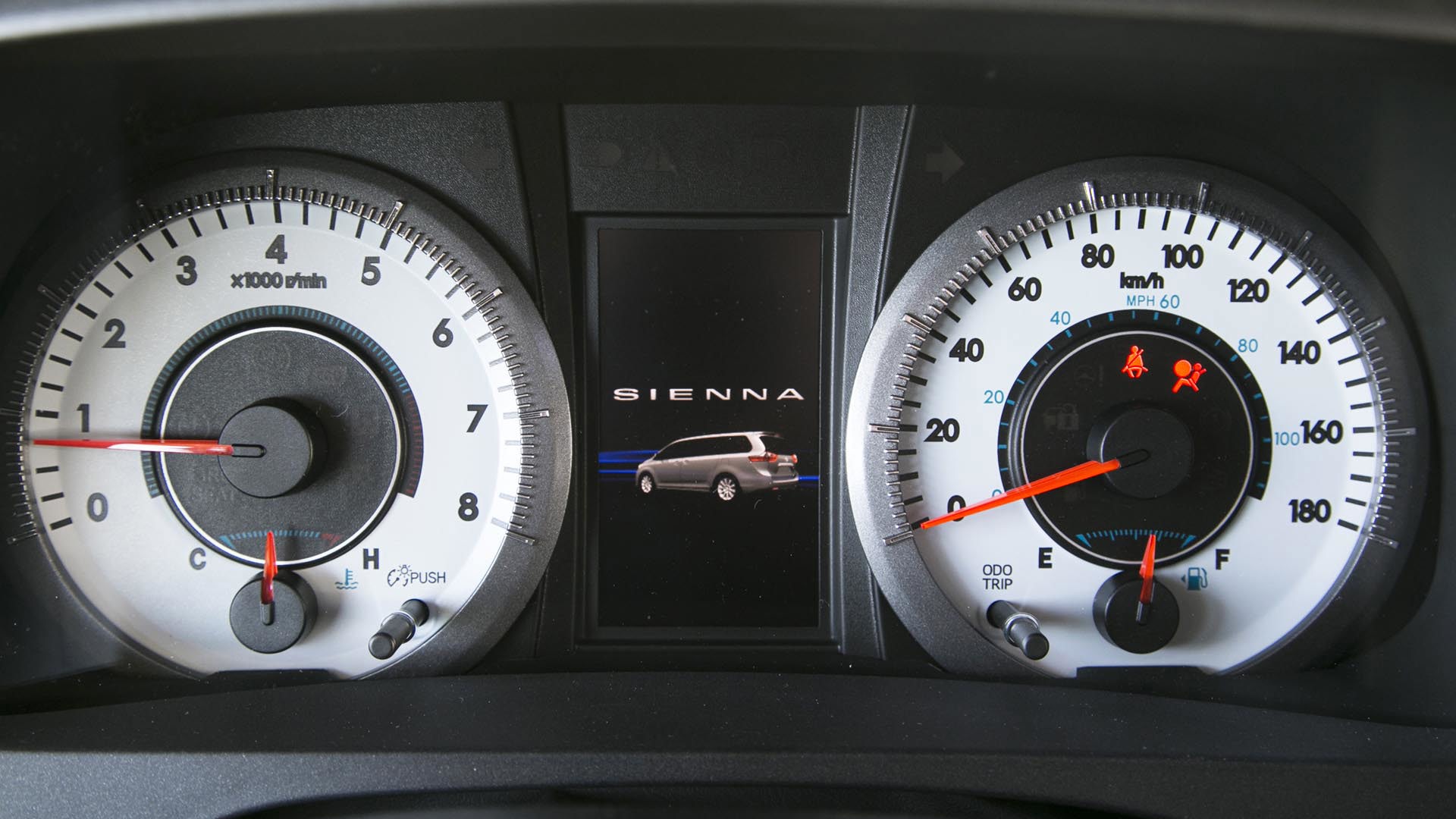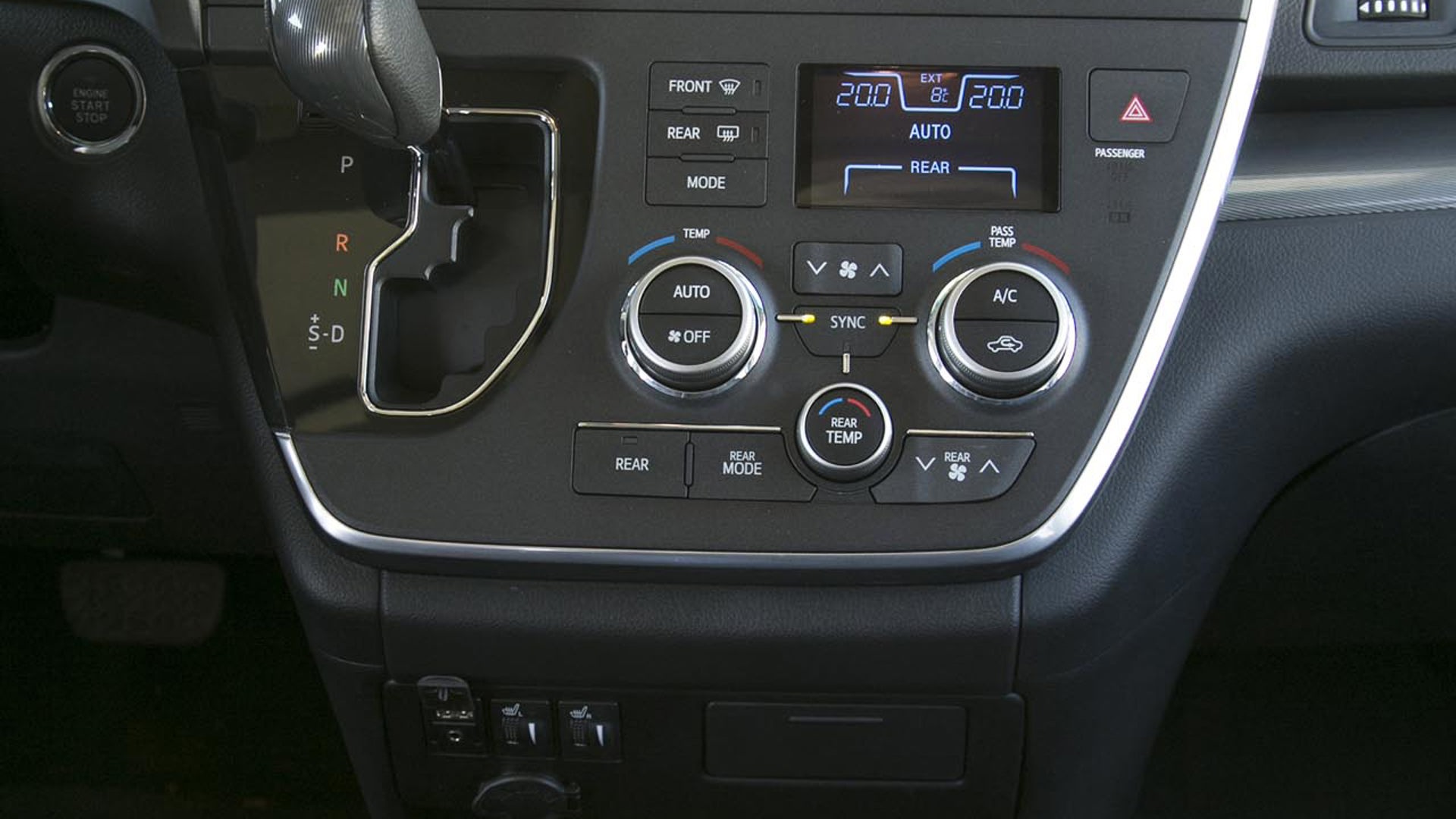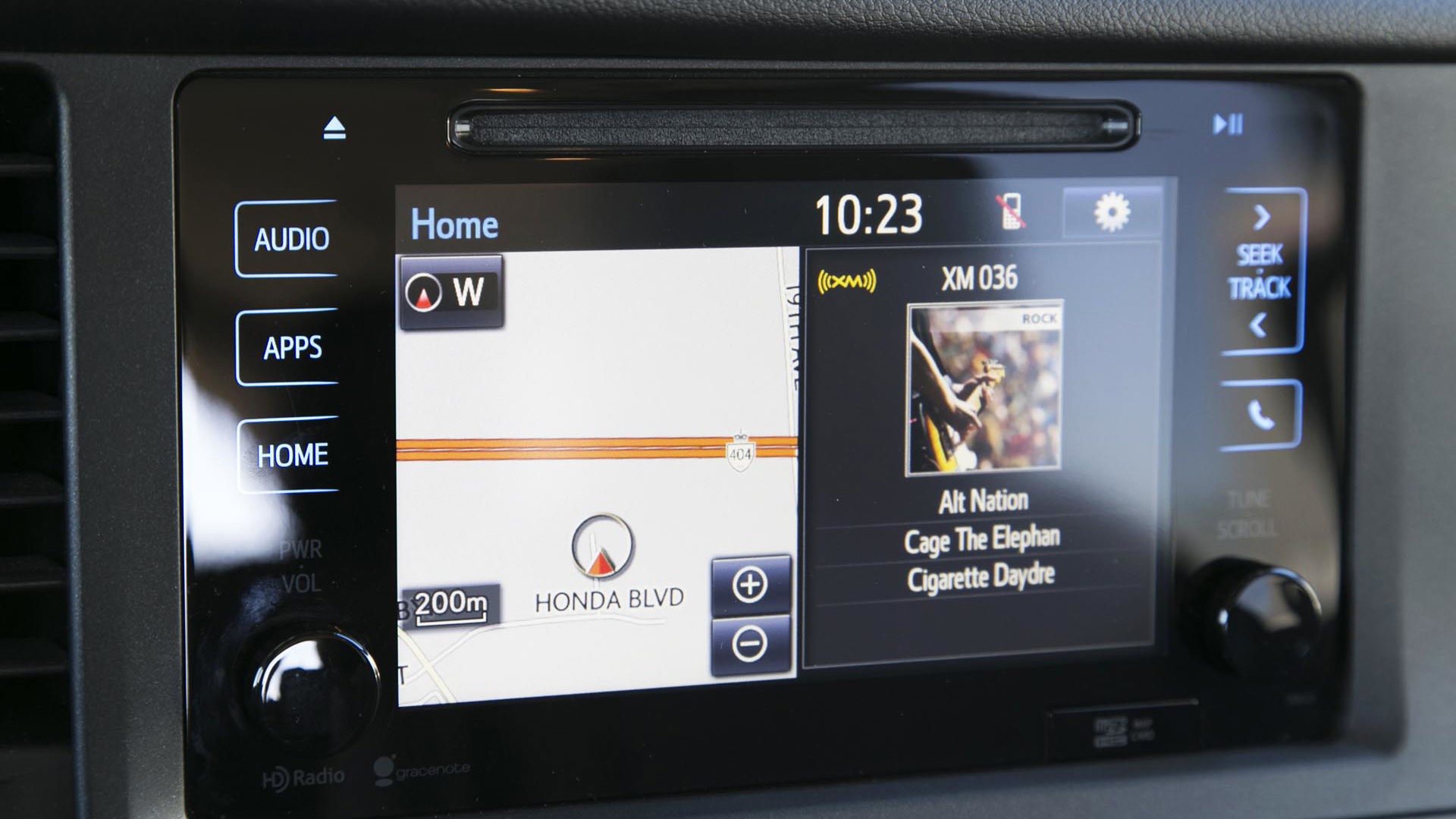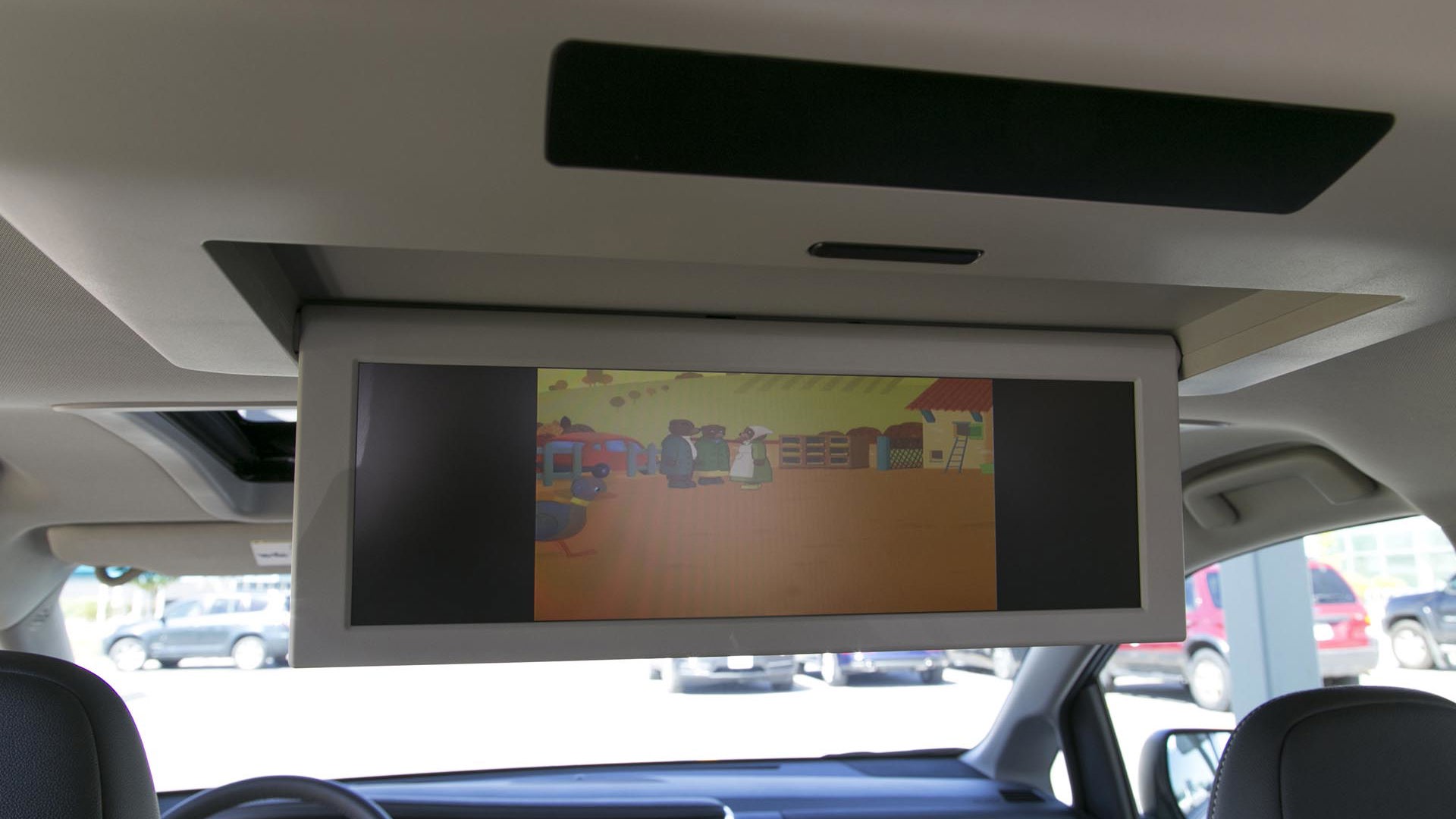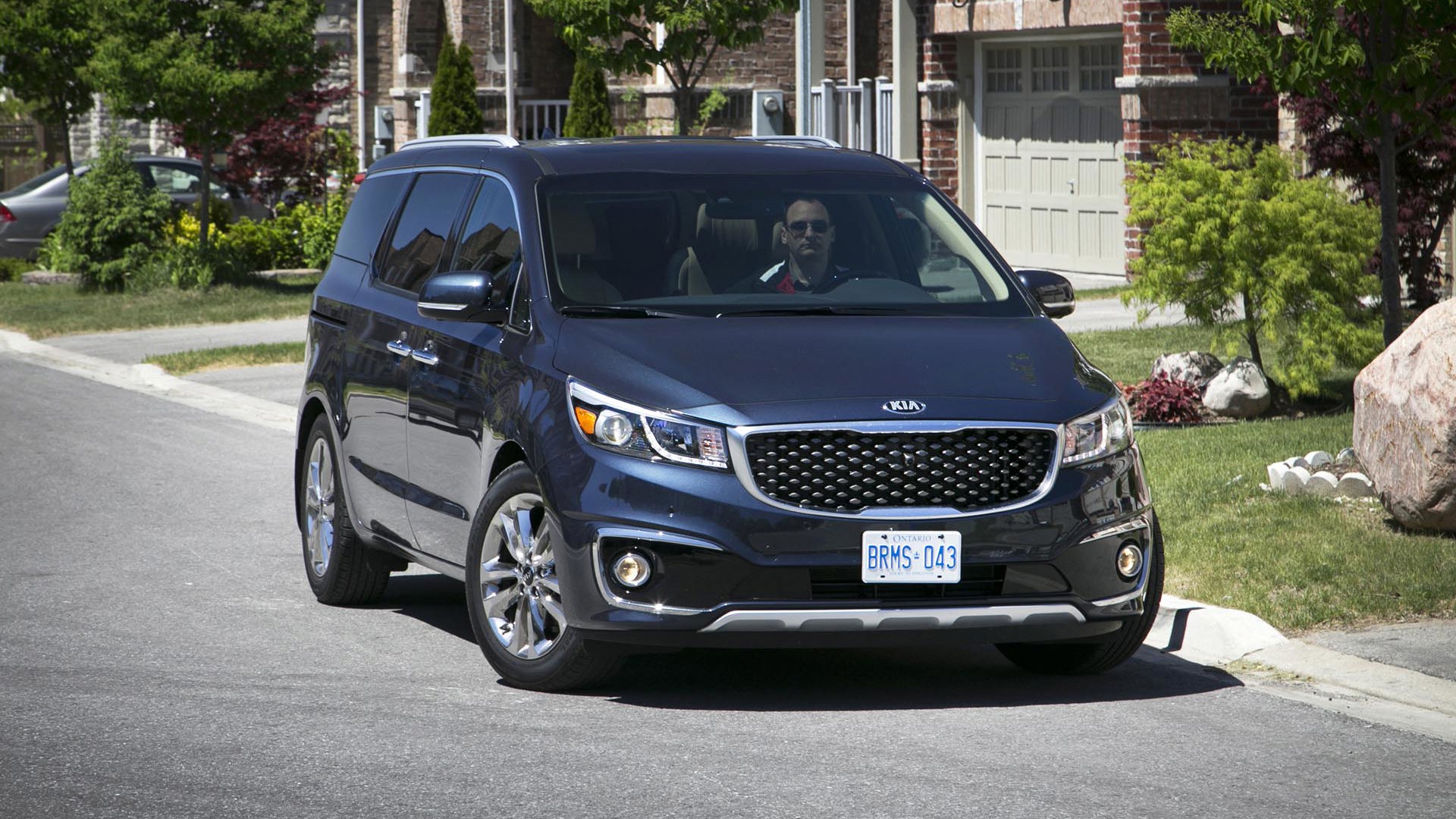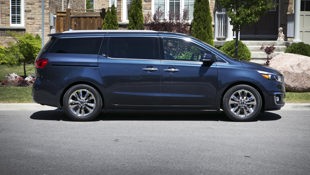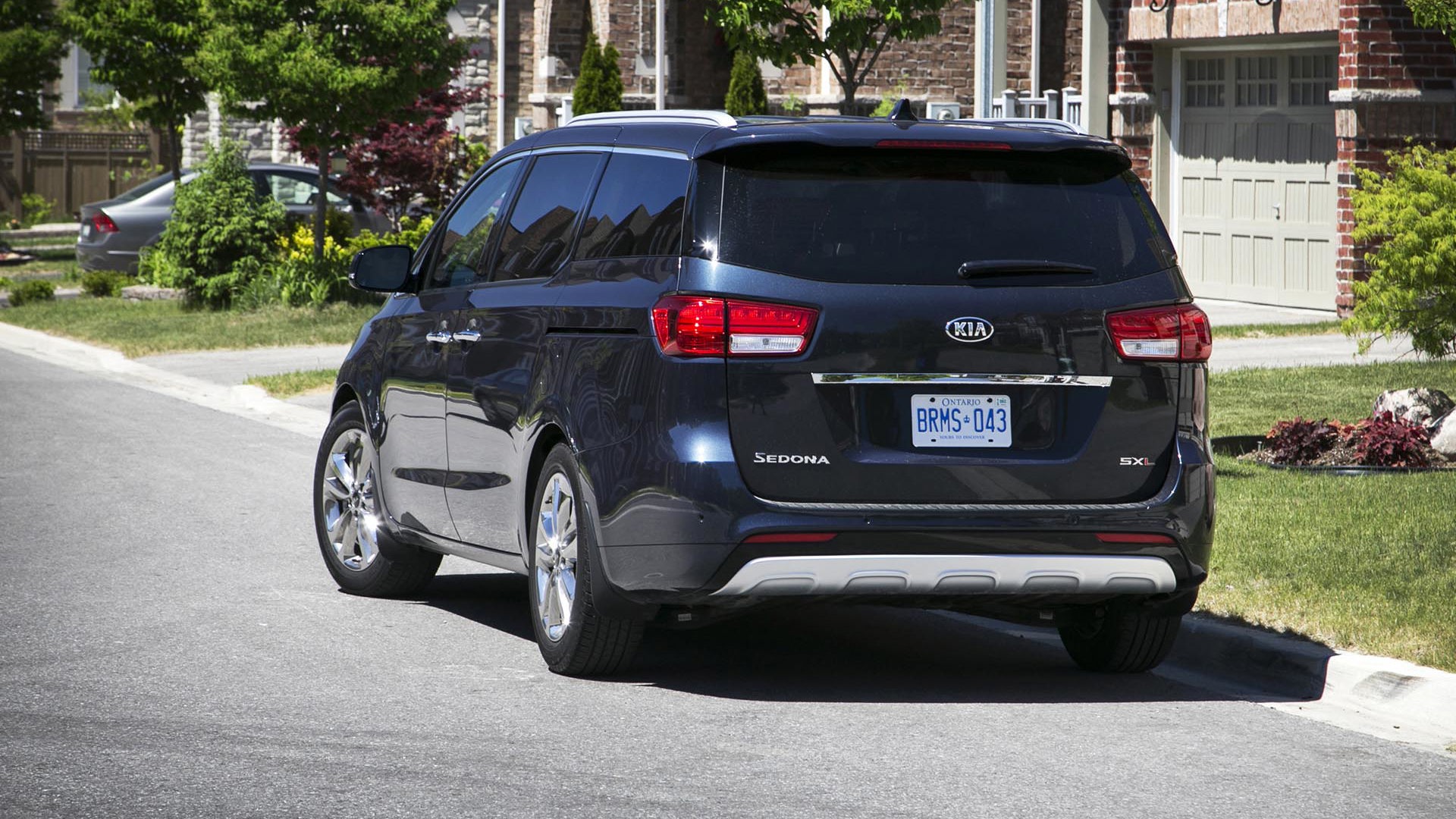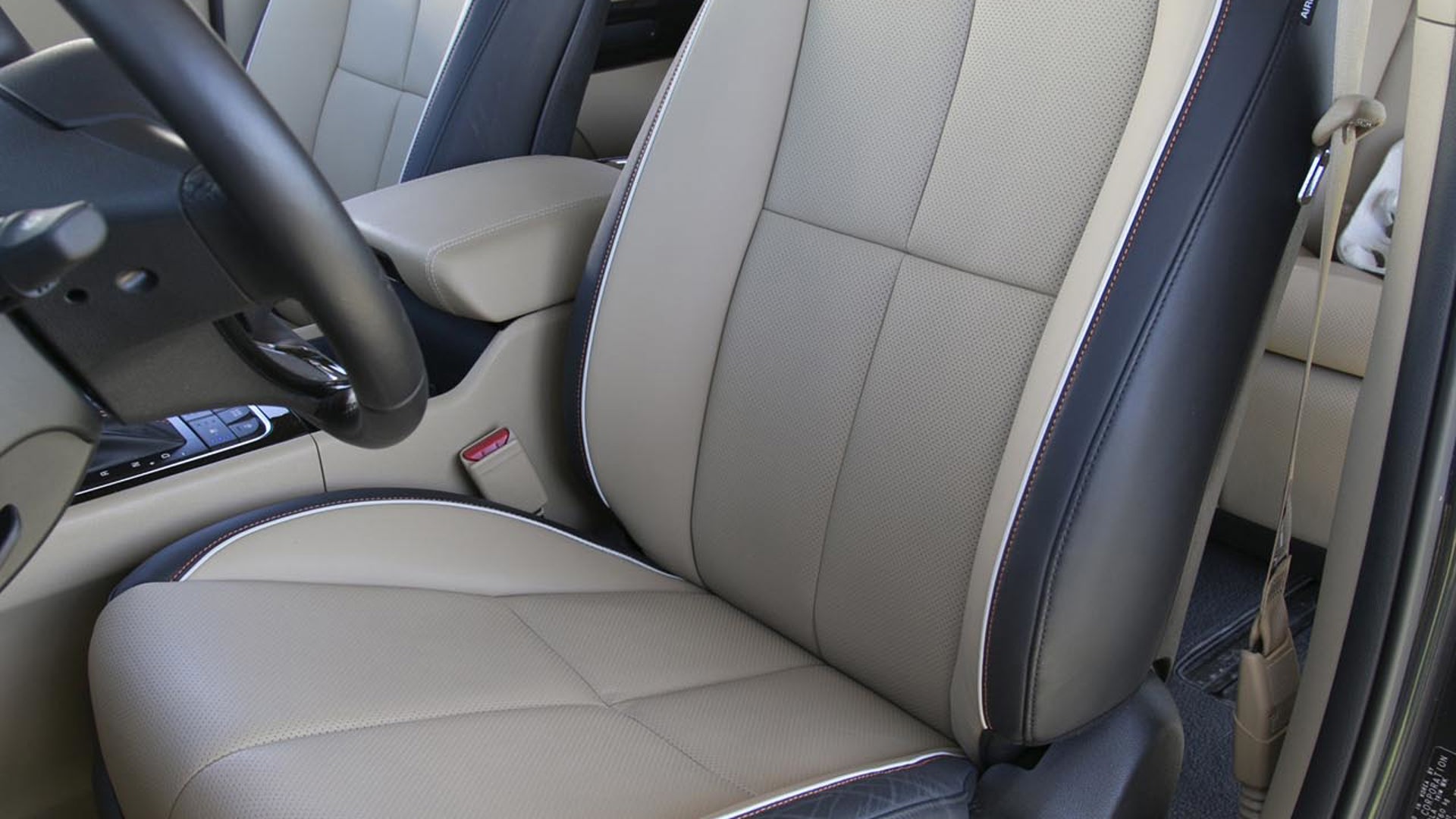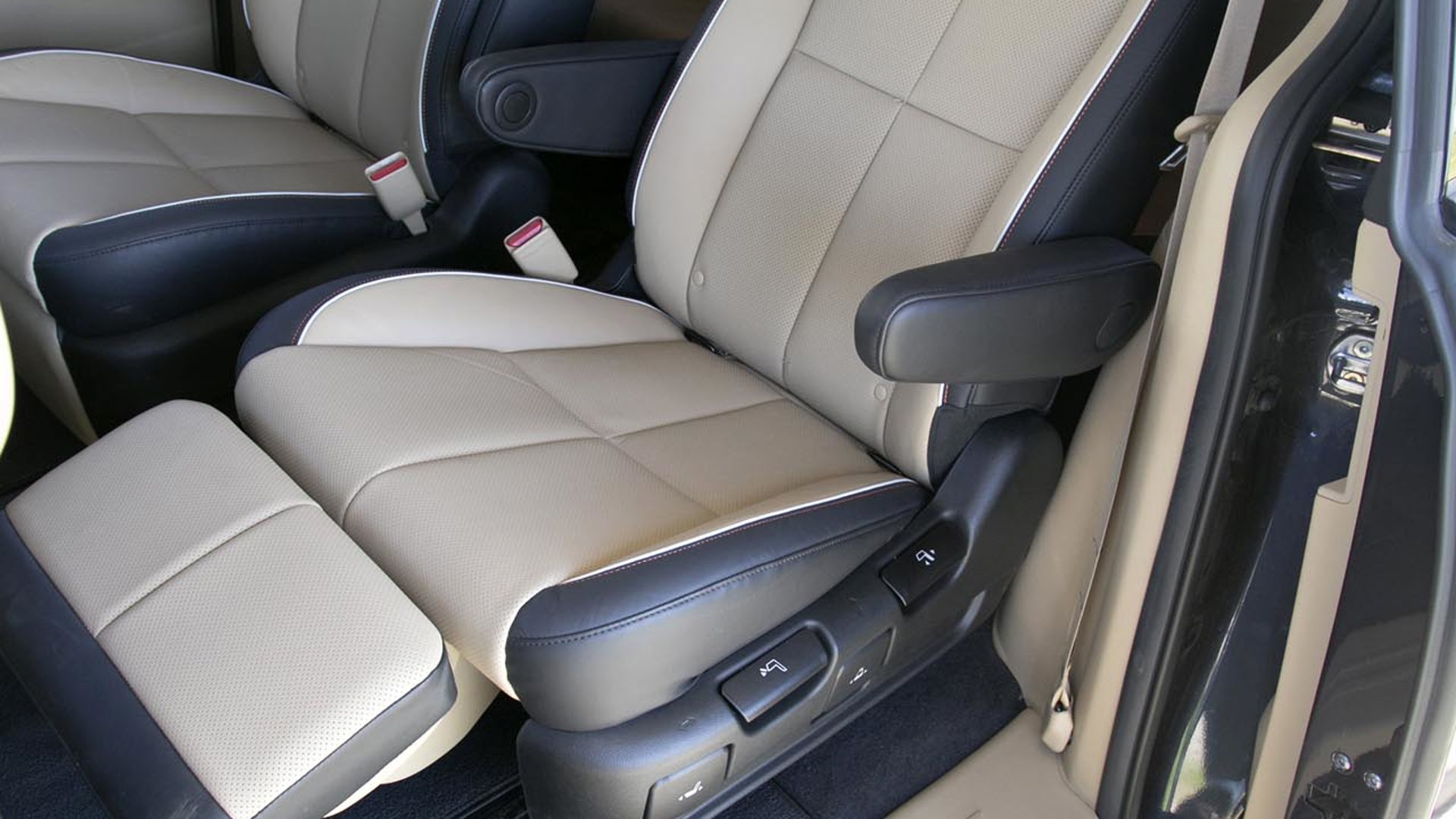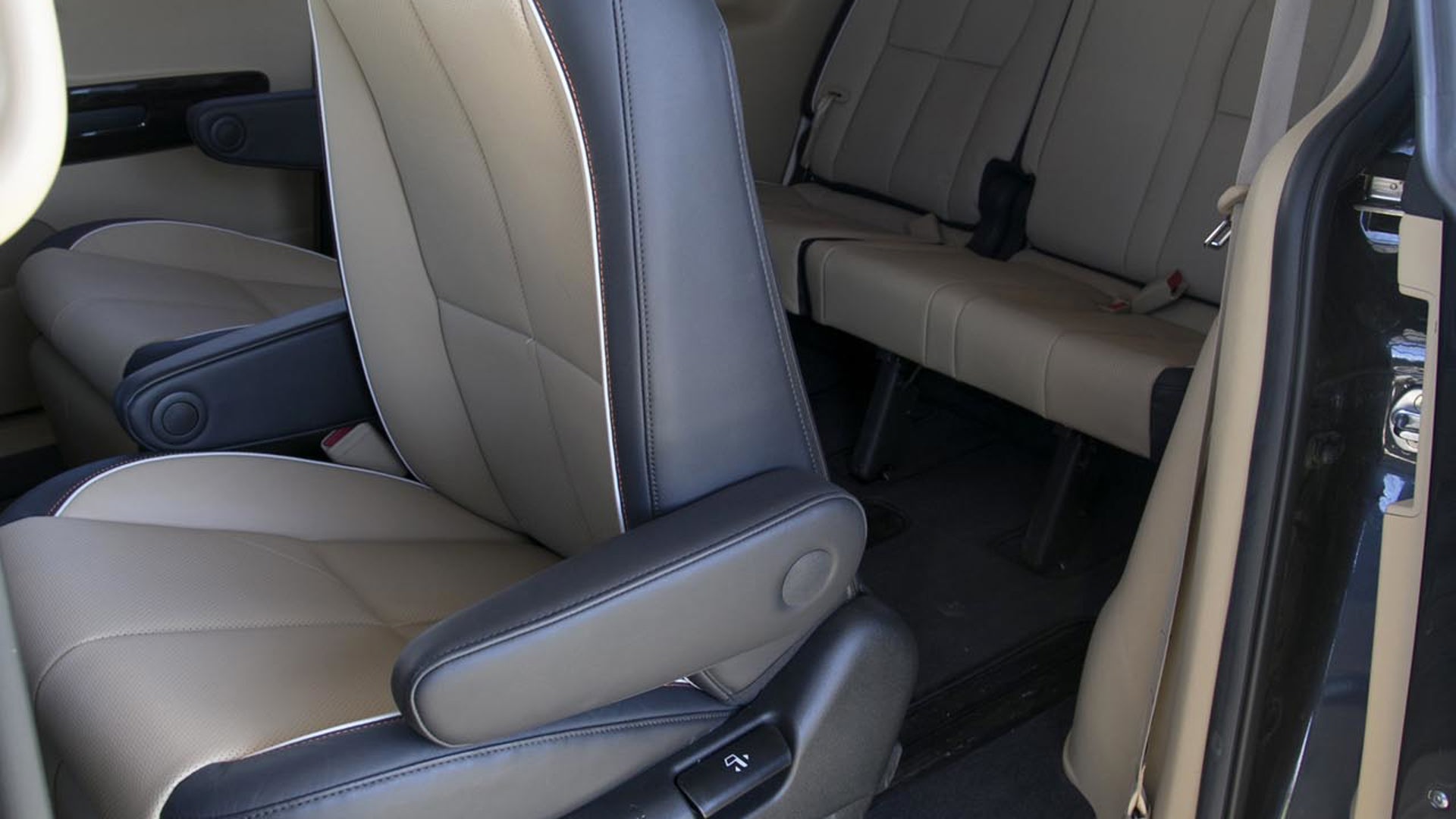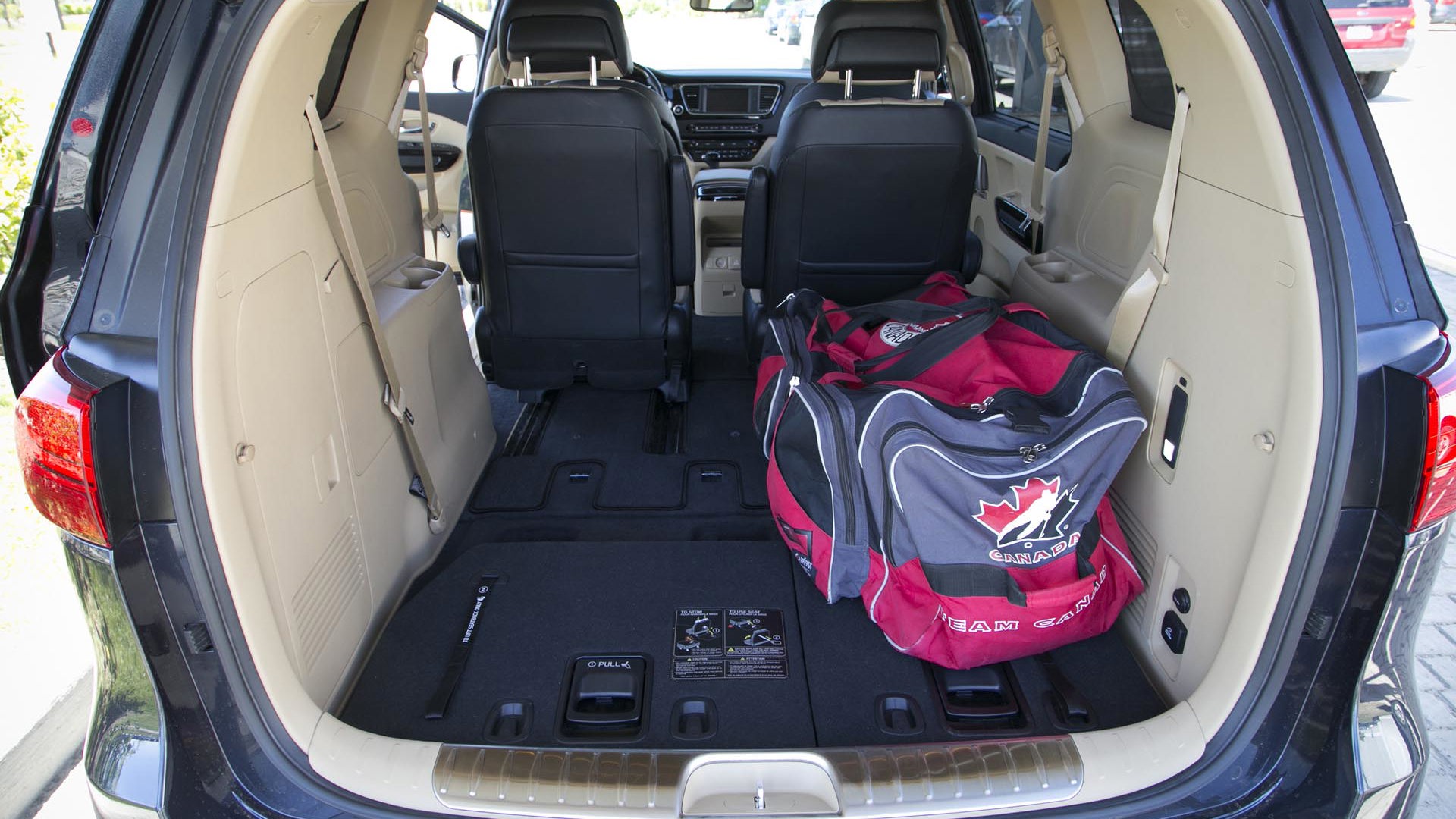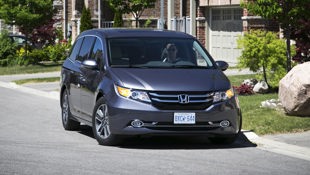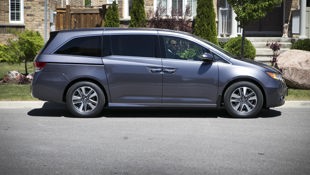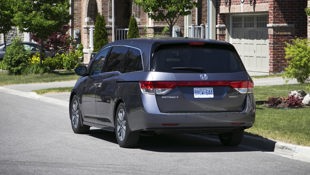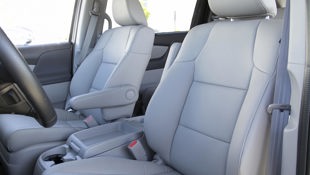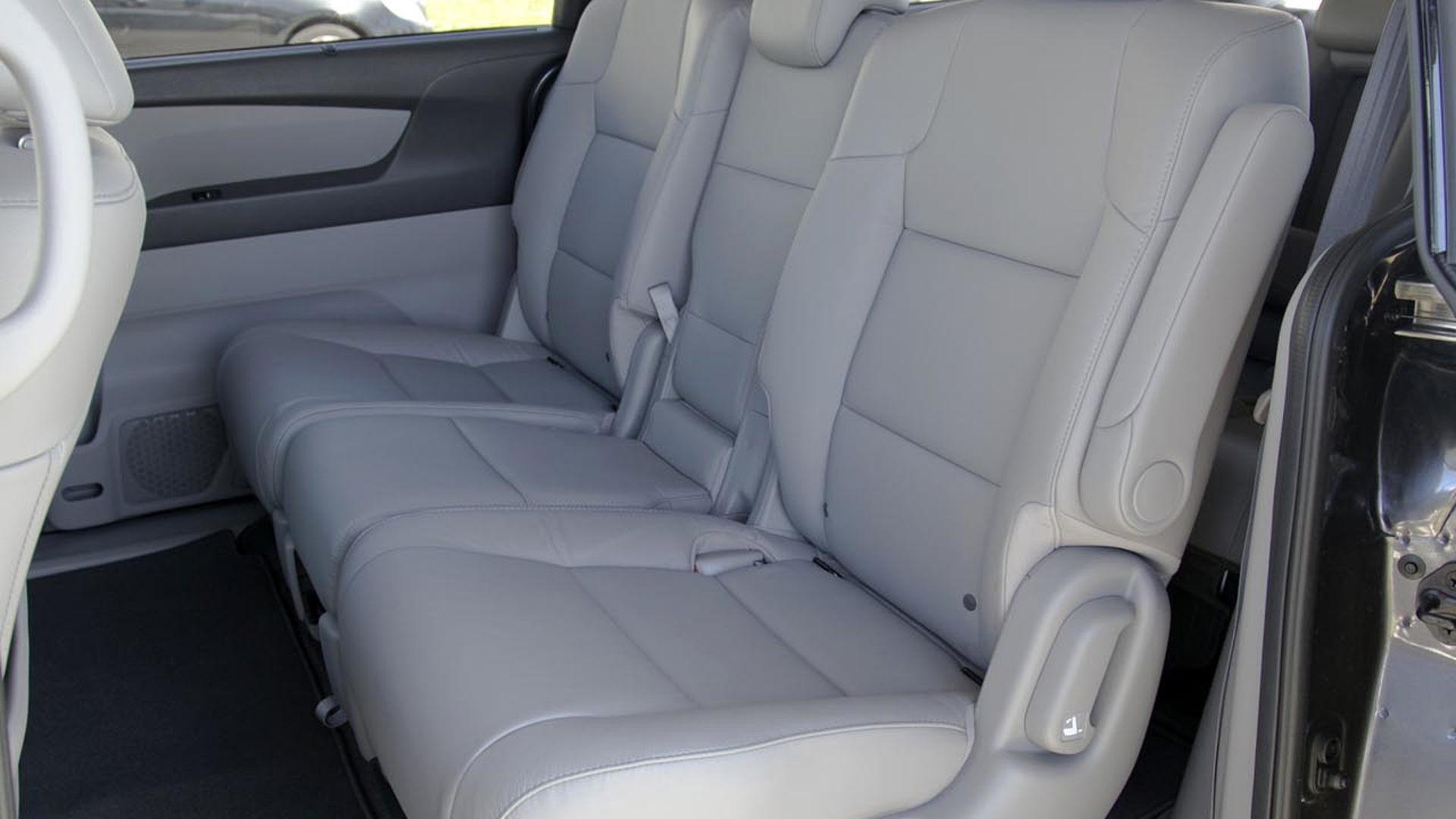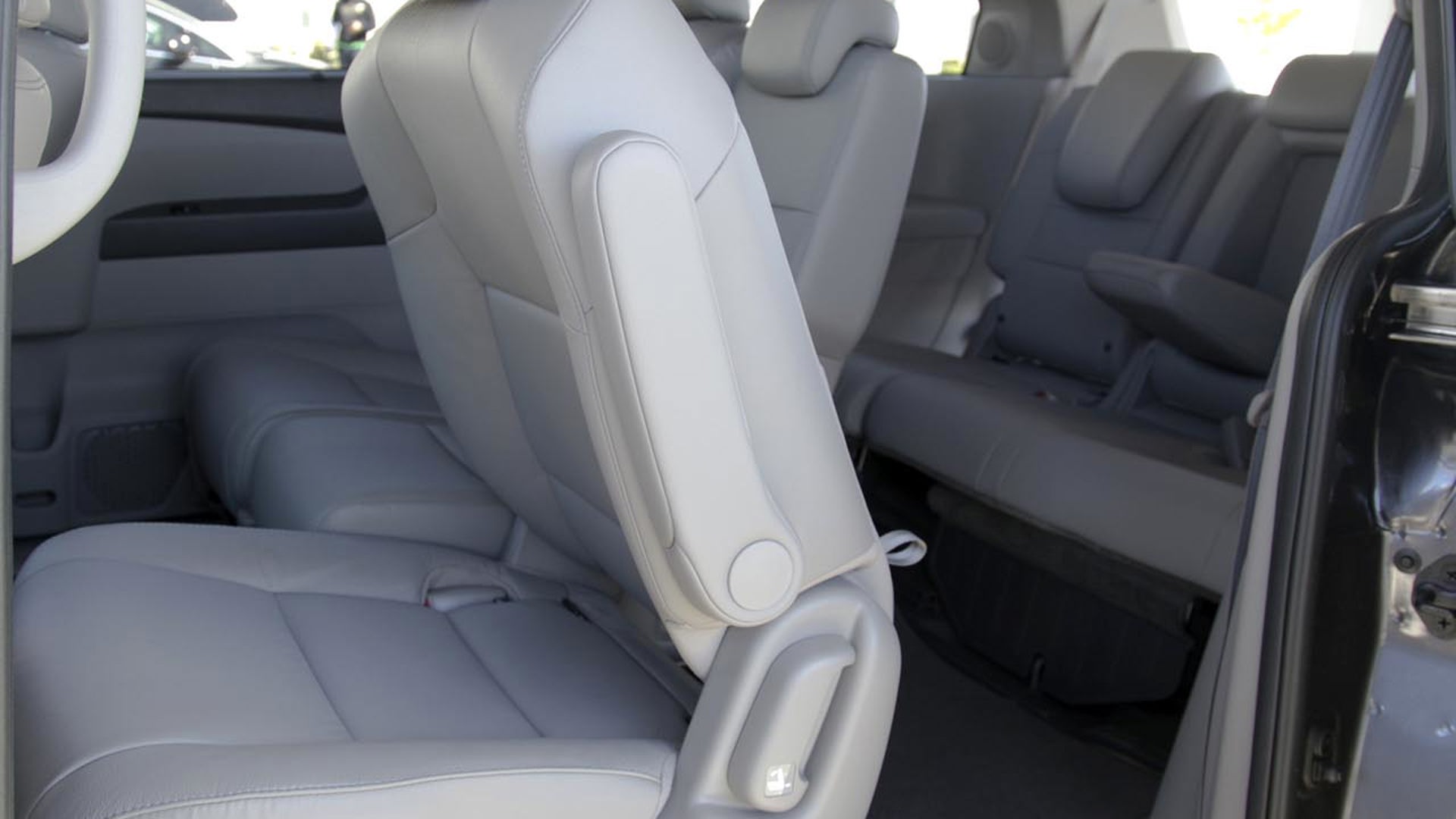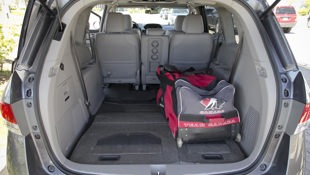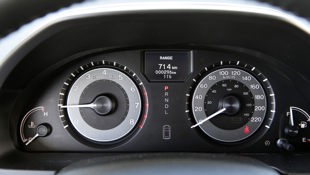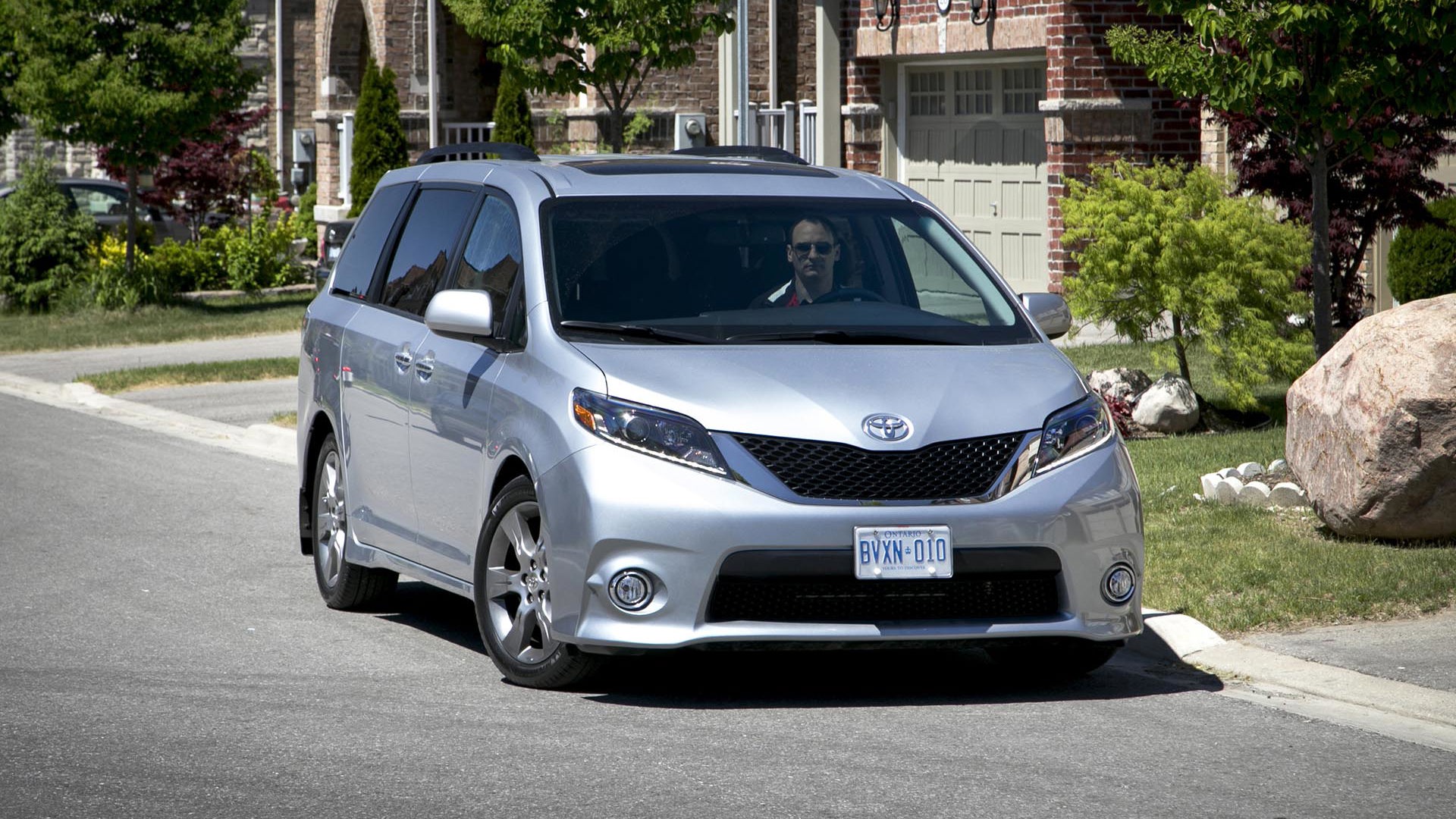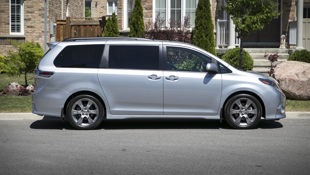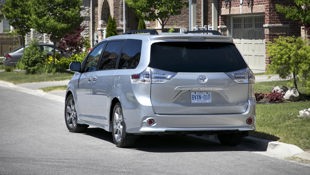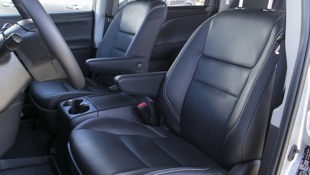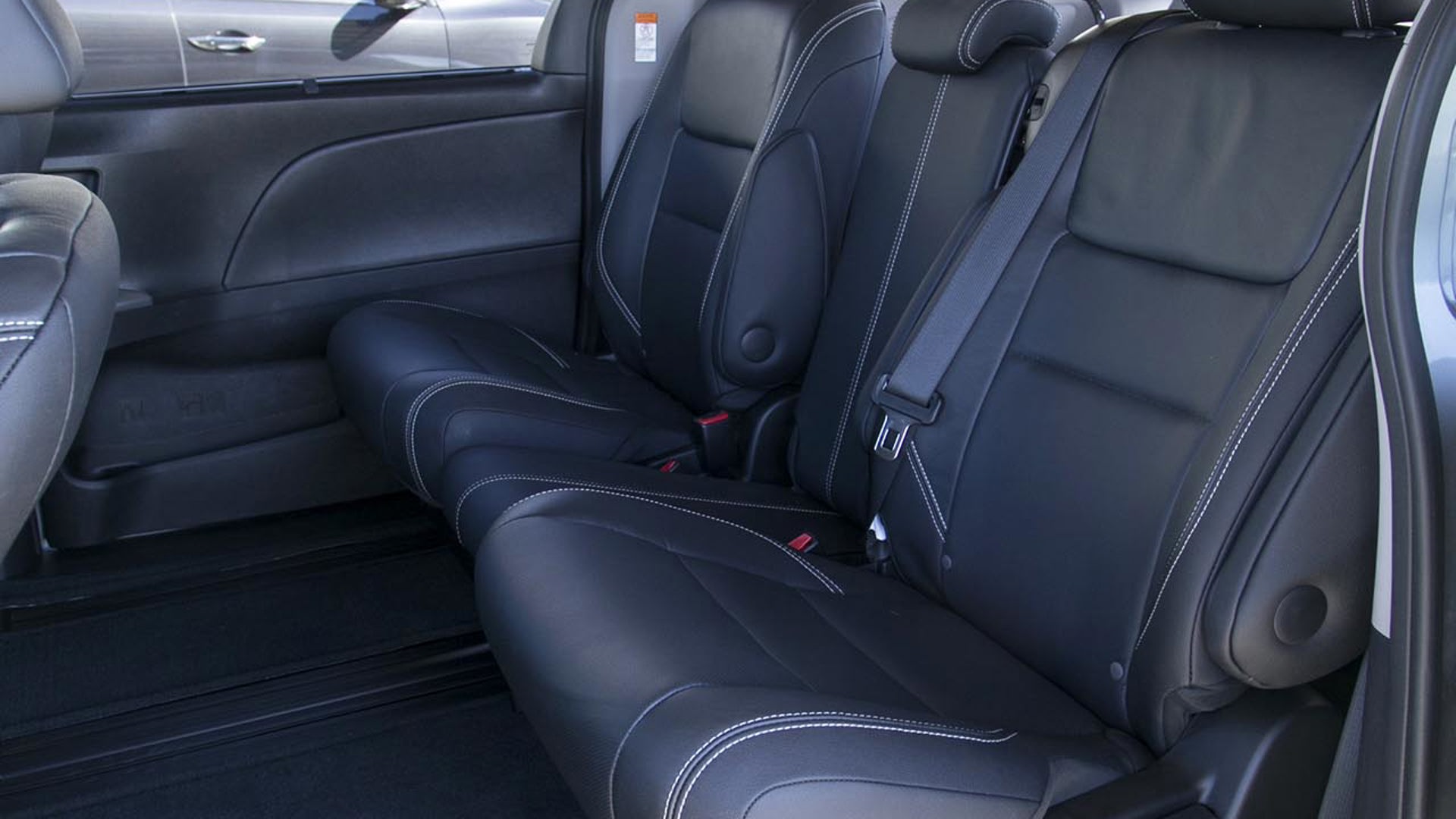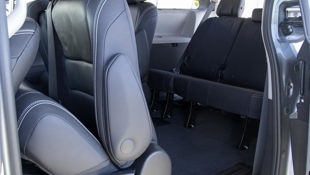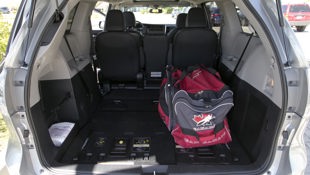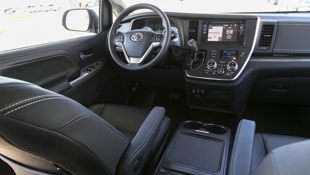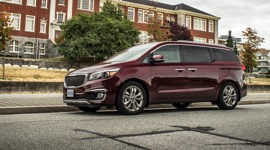Comparison Data
|
Base Price
$45,995
|
$48,410
|
$37,840
|
|---|---|---|
|
Optional Equipment
None
|
None
|
Technology Package (wireless headphones, dual-screen rear seat entertainment, 16.4-inch overhead monitor, navigation, sms-speech, EasySpeak, blind-spot monitor, rear cross traffic aler, smart key with power back door button, power moonroof) – $5,355
|
|
A/C Tax
$100
|
$100
|
$100
|
|
Destination Fee
$1,715
|
$1,695
|
$1,690
|
|
Price as Tested
$47,810
|
$50,205
|
$44,990
|
Review by Jacob Black and Jeff Wilson, photos by Jeff Wilson
Introduction, Jeff Wilson
We at autoTRADER.ca have a lot of secret love for minivans, and so decided to gather a herd of them. For science.
Minivans are the Swiss Army knife of the automotive world. It’s a market that may be small in model choices but big both in on-road presence and practicality. We at autoTRADER.ca have a lot of secret love for minivans, and so decided to gather a herd of them. For science.
The chief reason we have called for this assembly of people-movers is because Kia, the company known for giving lots of kit for little money (and having great styling thanks to stealing away Audi’s chief designer years ago) has given us a new offering. Having long marketed the Sedona van, a twin to Hyundai’s Entourage (no longer for sale), Kia still believes in the usefulness and sales revenue of minivans in this crossover-crazed era. This year’s all-new Sedona approaches the North American minivan market with a rather new approach, but is it enough to make us choose it over the established Japanese brand competitors?
The Dodge Caravan and Chrysler Town & Country continue to hold the top spot for sales volume in the segment, but their popularity is waning. Dodge is curiously ending production of the value-leading Caravan while the Town & Country will soldier on in the future. Toyota and Honda continue to do well, selling plenty of Siennas and Odysseys to North American buyers and since these two snatched the top two spots in our last minivan comparison test, they’ve been invited back for this test. The Nissan Quest? Do they even sell that space oddity anymore?
Let’s face it, minivans are about as popular as the kid with the body-odour problem after gym class. But just as that kid has many redeeming qualities, more than just moms love the practical boxes-on-wheels thanks to the solid value and uncompromising practicality these rigs present.
And so, with unbridled enthusiasm, Senior Editor Jonathan Yarkony, Editor Jacob Black and I gathered our cameras and clipboards and set out for a day of intense evaluation, leveraging all our collective wisdom and experience as dads. And although the amount of actual driving was a little less than we’d normally do for a comparison test, these three vans endured much greater scrutiny where it really counts for them – the usefulness of the interiors.
We flipped, folded and slid the seats around. We crawled into the first, second and third rows to test access and comfort. We watched a strange French-speaking animated bear on the on-board entertainment system (thanks to a DVD left in one of the vans). And we lifted Yarkony’s giant, but surprisingly light hockey bag (filled with his knitting supplies? I dared not open it) into and out of each of the vans, repeatedly.
We even raced them – in a fashion.
All of this to ensure we are giving you, kind reader, the thorough evaluation you deserve before making your own brave minivan purchase and not bowing to the social pressures of buying a less-sensible seven-seat SUV.
In the end, less than half a point in the total tally separated the three vans.
Third Place: 2015 Kia Sedona, Jeff Wilson
If any minivan is going to lead the charge in regaining the popularity of the once beloved family conveyance, it’s Kia’s new Sedona. Parents who have turned their noses up at the image-souring minivan ownership experience, choosing instead to stretch their budget for a seven-passenger SUV, will take one look inside the Sedona and forget it’s supposed to be uncool. [Or not. –Ed.]
The two-tone tan-and-black leather seats feature white piping and red stitching and look fantastic. The front thrones are heated and cooled, and second-row captain’s chairs not only move fore and aft, but actually slide laterally on their mounts, enabling a “buffer zone” between fighting kids, or some extra snuggling en route to prom for young love. What’s more, those second-row seats have flip-up footrests – the kind one finds in Business Class. Very swanky.
Kia doesn’t bother with a drop-down video screen for rear seat passengers, perhaps recognizing that nobody buys discs anymore anyway. Give little Billy and Sally their 3G tablets and they won’t bother to miss the screens. A Wifi hotspot would have been a perfect addition. Plus, this also allows Kia to fit the Sedona with dual sunroofs unavailable in the other two vans.
Back in front again, the dashboard will remind front seat occupants of a luxury sedan or crossover. The transmission shift column sprouts from a console between the seats unlike the dash-mounted affairs in the Honda and Toyota. The combination of clean, simple black buttons and knobs accompanying a straightforward infotainment touchscreen makes for a design that is both functional and fashionable.
Plus, as Kia is known to do, they have loaded up the Sedona with features and gizmos to make motoring easier too. Adaptive cruise control, for instance, makes its first appearance in a minivan here.
On the road, the Sedona handles and brakes as well as can be expected of a minivan, and although the 3.3L V6 puts out nearly 30 hp more than the Odyssey (and 10 more than the Sienna), it goes largely unfelt thanks to a torque rating that’s similar to the other two, but comes on at higher revs.
The Kia is notably quieter than the Toyota and Honda though, with more sound deadening clearly keeping road, engine and wind noise at bay even at highway speeds. This helps enjoyment of the best-in-class stereo found in the Sedona too.
Where the Odyssey is a superb utility vehicle and the Sienna is apparently supposed to be sporty or something, the Sedona follows a path of luxury. And by golly all those niceties nearly had the Sedona winning the whole darned competition, with only objective factors like pricing and fuel consumption pushing the Sienna and Odyssey ahead.
But there are a few other areas that are worth mentioning about the Kia. While second-row passengers can while away the hours on the freeway in decadence, the third row is challenging to access with a tiny opening and tall step-in height, and once back there, headroom is lacking.
Although the cargo capacity of all three of these vans is virtually equal in all practical applications, the finishes and details in the space shows some cost cutting in the Kia. Each of the vans employs a similar system whereby a quick two-step tug on a few straps and levers sees the third row collapse into the cargo floor. In both the Honda and Toyota, the ease and precision of the mechanism’s operation shows considerable engineering prowess. In the Sedona, however, the structure flexes enough to make one wonder how well it’ll stand up to repeated abuse over the years. Let’s hope Kia’s torture testing is as thorough as Ikea’s.
Likewise, once the rear seat is folded, the floor of the cargo area in Odyssey and Sienna is flat, with flaps covering the creases and crevices that would capture toys and grit over the years. In the Sedona, some of the seating hardware remains exposed. It’s little details like this that will remind owners in time why they bought a minivan in the first place – good, durable, usable utility.
An unrefined transmission, lack of versatility inside and worse EPA fuel economy ratings saw the Kia drop to a very, very close third.
While Kia deserves a hearty round of applause for raising the bar in terms of the minivan image, we feel there are still two slightly better choices in the category.
| Warranty: 5 years/100,000 km; 5 years/100,000 km powertrain; 5 years/unlimited distance corrosion perforation; 5 years/100,000 km roadside assistance |
Pricing: 2015 Kia Sedona SXL
Base Price (base trim): $27,695
Base Price (SXL): $45,995
Options: None
A/C Tax: $100
Freight and PDI: $1,715
Price as Tested: $47,810
Observed Fuel Consumption: L/100 km
EPA Fuel Consumption: L/100 km
Second: Honda Odyssey, Jacob Black
First impressions mean a lot in this world. Which is bad news for the Honda Odyssey. Of the trio, it’s the least attractive and least welcoming inside. The prison-drab grey interior and hard materials are a poor effort next to the sumptuous Sedona or sporty Sienna and call into question the higher price tag Honda has applied to it.
It’s once you get past that first reaction though, that the Odyssey begins to shine. For a start, it’s by far and away the easiest to get into. The low step-in height not only improves head room but makes access easier. It’s the same right back through to the third row with Honda’s lower floor staying about level all the way back while the others rake upwards.
The third row in the Honda was easily the roomiest, most comfortable and easiest to get into. Likewise, the second-row seats were the easiest and lightest to move around. Granted, the Sedona was handicapped because its second row was a pair of 18th century barber chairs but the Honda’s controls made the most sense and the action was the best.
As Jeff says, “If you're going to haul around a van full of adults, it's the Odyssey that'll keep your group happiest, especially for those seated in the way-back of the van. The third-row seats are actually comfortable, reclining as they do.”
The Odyssey packs in content, too. Big DVD screen, cruise control, LaneWatch, back-up camera with reversing sensors, blind-spot monitoring, Cool Box, audio/climate controls in the third row, a removable centre console in the first row and a removable centre seat in the rear – it had the lot and scored big points for it.
Sitting in the carpark, and poring over the interior with our fine-tooth comb it looked like the Odyssey would be a clear winner. Despite my disdain for the interior layout and the HMI system it was easily the most equipped and most versatile of the lot, with a suite of seating configurations available. The Odyssey even have LATCH anchors for child seats in all three third-row seats. The only one of the trio that does. Those things drove me to select the Odyssey for my road trip to the Indy 500 with my family – that, and the onboard vacuum cleaner.
Once we got driving, however, the Odyssey began to lose ground. It scored lowest for NVH, and the steering was numb – especially next to the Sedona and Sienna. A commenter in our forums suggests that might be due to the OEM tires. Curiously, the steering is a little more communicative after 15 degrees of lock, but really vague in the centre. I couldn’t get past it. But really, nobody base minivan purchase on steering feel in on-ramp attacks, so let’s move on.
The engine and transmission package is a good one and, though engine noise inside the cabin was an issue, the Odyssey was capable of hustling itself along. Jeff adored the Honda, “The Odyssey feels well thought out and even better assembled.” He gushed.
“This is the practical choice that's built to stand the tests of hundreds of thousands of kilometres of spilled juice boxes and fighting siblings. Plus it has a built in ShopVac, so that sucks!” It seems too much time in a minivan had our Jeff sprouting Dad jokes.
But the Odyssey was the most expensive of the trio by some $2,000 dollars. Which coupled with a slightly worse fuel economy rating, slightly less refinement and woeful HMI saw it lose out by the skin of its teeth.
| Warranty: 3 years/60,000 km; 5 years/100,000 km powertrain; 5 years/unlimited distance corrosion perforation; 3 years/unlimited distance roadside assistance |
Pricing: 2015 Honda Odyssey Touring
Base Price (base trim): $27,850
Base Price (Touring): $48,410
Options: None
A/C Tax: $100
Freight and PDI: $1,695
Price as Tested: $50,205
Observed Fuel Consumption: L/100 km
EPA Fuel Consumption: L/100 km
First: Toyota Sienna, Jacob Black
To put this win into perspective, I should tell you that when we collated our scores and converted them to percentages, the Sienna claimed this victory by just 0.15 percent. In any given month, incentives could rearrange our podium any number of ways.
It is the absolute closest of all time. When you glance through our six scoring categories it becomes apparent how the Sienna claimed this win: consistency.
While the Odyssey claimed three very important wins, the Sienna’s five second-place finishes and one win thanks to its $44,990 sticker price (over $5,000 less than the Odyssey) saw it stalk steadily to the top step of the podium.
As the least expensive of this test group, the Toyota Sienna could have been forgiving for being less refined. How surprised we were then, when it wasn’t. The interior was detailed and interesting leatherette, the seats plush and comfortable and the overall design appealing. The interior may not be as luxurious or upscale as the Kia’s (I bet that 20 years ago you didn’t think anyone would say that!) but is still a very solid offering.
The infotainment system is perhaps simpler than the Honda’s but scored good marks. “Typical of almost all contemporary Toyotas, the ergonomics are excellent,” said Jeff Wilson. “There are proper knobs and buttons all large enough to be operated with mittens and the touchscreen infotainment system just makes sense too.”
Jeff dissented from Jonathan and I on styling. Where we gave it the top marks in the trio, Jeff took offense to Toyota’s attempt at “youthing up” the Sienna. “The styling of the SE trim is ridiculous. It's like seeing a guy in his 40s trying to be cool by dressing like a teenager. Sideskirts and ‘Altezza’ lights have no place on a minivan.” The rest of us disagreed, enjoying the Sienna’s simple but elegant lines and the tough-looking aesthetic upgrades. A shame it was in one of the least effective colours for the SE trim – black, grey and white all pull of the sporty look to much greater effect.
Like the Odyssey, the Sienna puts all the controls, including gear selection and such on the dashboard proper. Where the centre console cuts off the driver and passenger in the Kia, in the Japanese rigs there is a large space where a pot plant, a tote bag or a backpack can fit comfortably. While the Kia feels more car-like as a result, the practicality of this space can’t be overstated.
The Sienna also won our minivan race.
When lined up next to each other in the carpark, the three vans’ sliding side doors showed identical opening and closing times. But, lined up next to the others for one final minivan race, the Sienna’s tailgate opened the fastest. This is because the Sienna’s tailgate pops open rapidly on gas-filled struts, and closes with the power motor. The others use the power motor for opening and closing functions. The Sienna tailgate closes a tiny bit slower as a result of the motor having to fight the struts but when do you want the tailgate to move fastest? When you’re walking away as it closes, or when you’re standing at the back with two armloads of your sister-in-law’s luggage?
On the road the Sienna’s transmission was unobtrusive, the engine adequate and the steering effort well measured.
While the Sedona gave the least NVH and the best handling, and the Odyssey’s fuel economy ratings from the EPA were best of the bunch, the Sienna was consistently competent in all areas.
Which is something we could say about minivans in general.
They drive well enough to be useful, even in the city. They fit up to seven or eight people – comfortably, plus haul their gear. Hell, I’ve even seen a bloke who carts his racing motorbike around in one of the things.
If it comes in a package, you can fit it in a minivan.
Minivans then, are the complete package. And in this pack of complete packages, one was the best all-round package. So, for its well-packaged commitment to … um…. packages… we award this victory to the Sienna.
| Warranty: 3 years/60,000 km; 5 years/100,000 km powertrain; 5 years/unlimited distance corrosion perforation; 3 years/60,000 km roadside assistance |
Pricing: 2015 Toyota Sienna SE V6 8-Passenger FWD
Base Price (base trim): $31,040
Base Price (SE): $37,840
Options: Technology Package (wireless headphones, dual-screen rear seat entertainment, 16.4-inch overhead monitor, navigation, sms-speech, EasySpeak, blind-spot monitor, rear cross traffic aler, smart key with power back door button, power moonroof) - $5,355
A/C Tax: $100
Freight and PDI: $1,690
Price as Tested: $44,990
| Category | Sedona | Sienna | Odyssey |
| Design (Interior and Exterior) | 1st | 2nd | 2nd |
| Practicality/Versatility | 3rd | 2nd | 1st |
| Comfort and Features | 3rd | 2nd | 1st |
| Powertrain | 3rd | 2nd | 1st |
| Driving Impressions | 1st | 2nd | 3rd |
| Value/Warranty | 3rd | 1st | 2nd |
